Transform your kitchen into a warm, welcoming space that celebrates the beauty of simpler times with primitive design elements. Primitive kitchens embrace the charm of early American colonial homes, featuring handcrafted authenticity and rustic simplicity that never goes out of style. This timeless aesthetic combines weathered wood, traditional metals, and earthy color palettes to create inviting spaces that feel both historical and functional. Unlike modern farmhouse styles that blend contemporary elements, primitive design leans heavily into aged appearances and antique textures that tell stories of bygone eras. These design concepts emphasize durability, craftsmanship, and functionality while maintaining the cozy atmosphere that makes kitchens the heart of the home. From reclaimed barn wood cabinets to wrought iron fixtures, each element contributes to an authentic primitive experience that transforms ordinary cooking spaces into welcoming hearths filled with character and historical significance.
1. Reclaimed Wood Cabinet Design
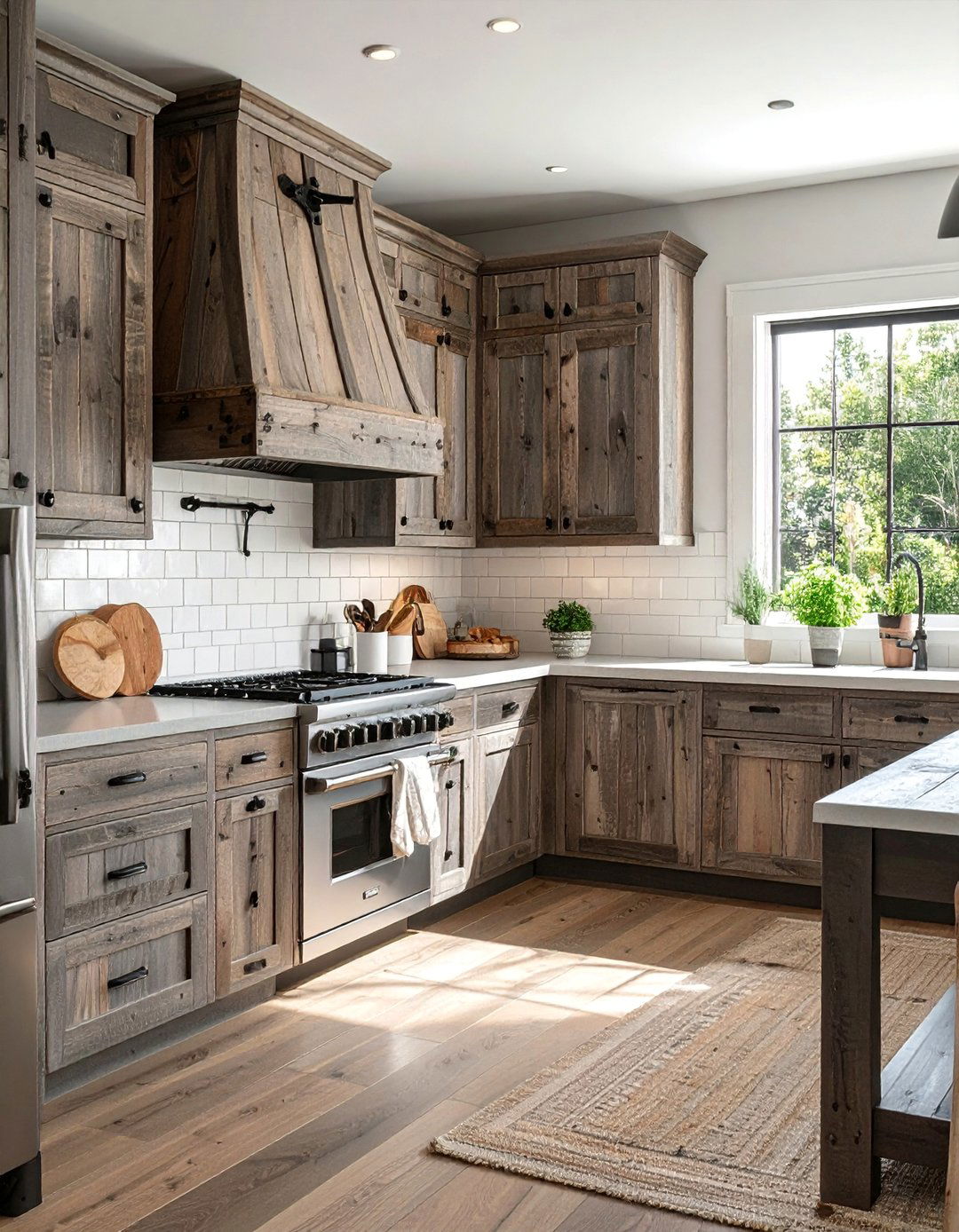
Transform your kitchen with authentic reclaimed barn wood cabinets that showcase decades of weathered history and natural patina. These handcrafted pieces feature unique textures from saw marks, nail holes, and natural aging that create character impossible to replicate with new materials. The aged wood displays varying shades of brown and gray, adding dimensional warmth to your space while telling stories of rural heritage. Choose from clear, textured, or walnut finishes that highlight the wood's natural beauty while providing modern functionality. Reclaimed barn wood cabinets can be styled as unfitted furniture pieces or traditional built-ins, offering both upper and lower storage solutions. Pair with wrought iron hardware and traditional hinges to complete the authentic primitive aesthetic that connects your kitchen to America's agricultural past.
2. Farmhouse Sink Installation
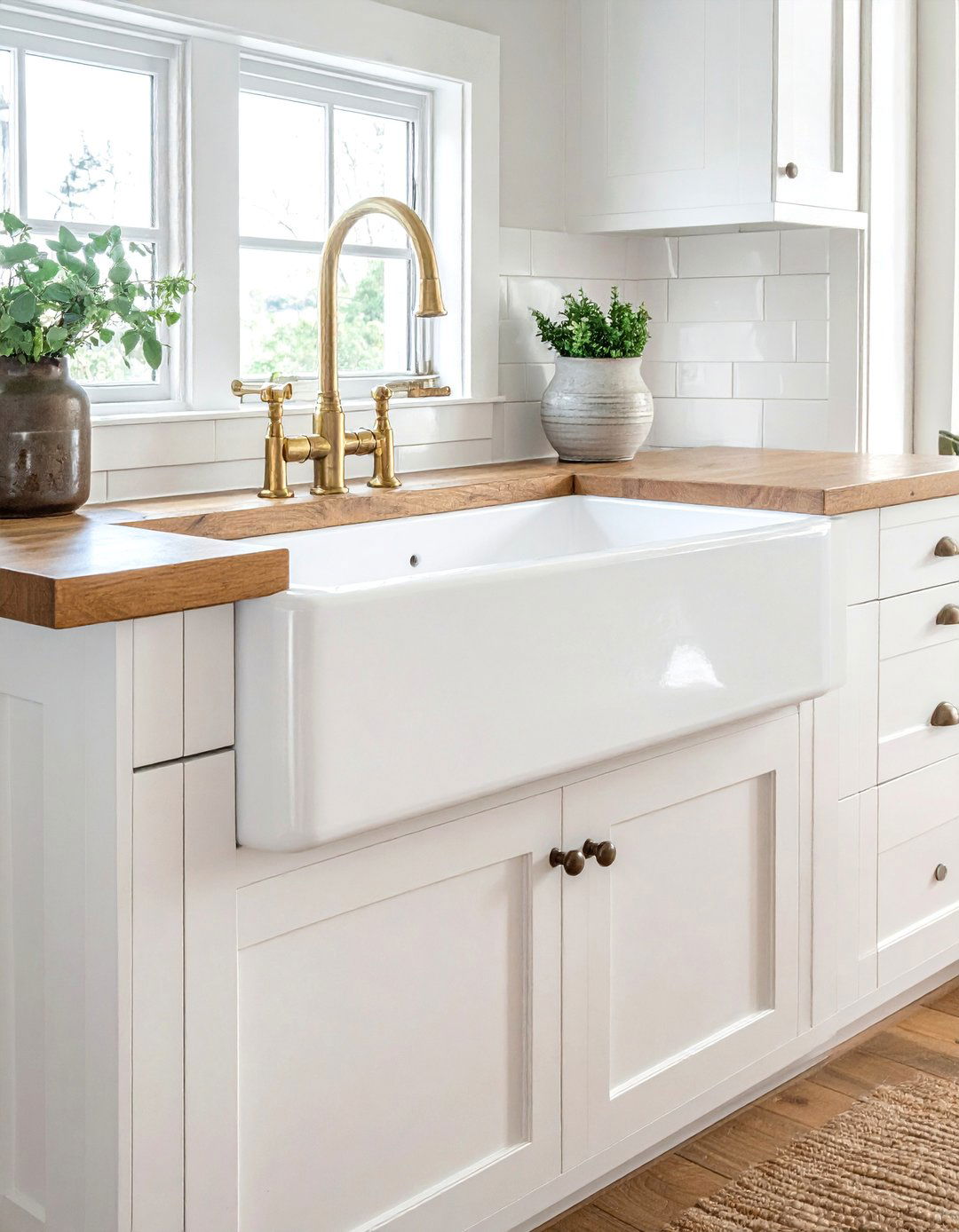
A deep farmhouse sink serves as the centerpiece of primitive kitchen design, offering both practical functionality and historical authenticity. These apron-front sinks, traditionally made from fireclay or cast iron, provide ample space for washing large pots and handling farm-fresh produce. The exposed front panel becomes a design focal point that anchors your primitive aesthetic while maintaining the utilitarian spirit of colonial kitchens. Install your farmhouse sink with a skirted cabinet base using natural linen or burlap fabric for an authentic unfitted furniture look. Complement with a vintage-style pump faucet or bridge faucet in oil-rubbed bronze or antique brass finishes. The substantial presence of a farmhouse sink immediately establishes the primitive character of your space while providing modern convenience for daily kitchen tasks.
3. Open Shelving Storage Solutions
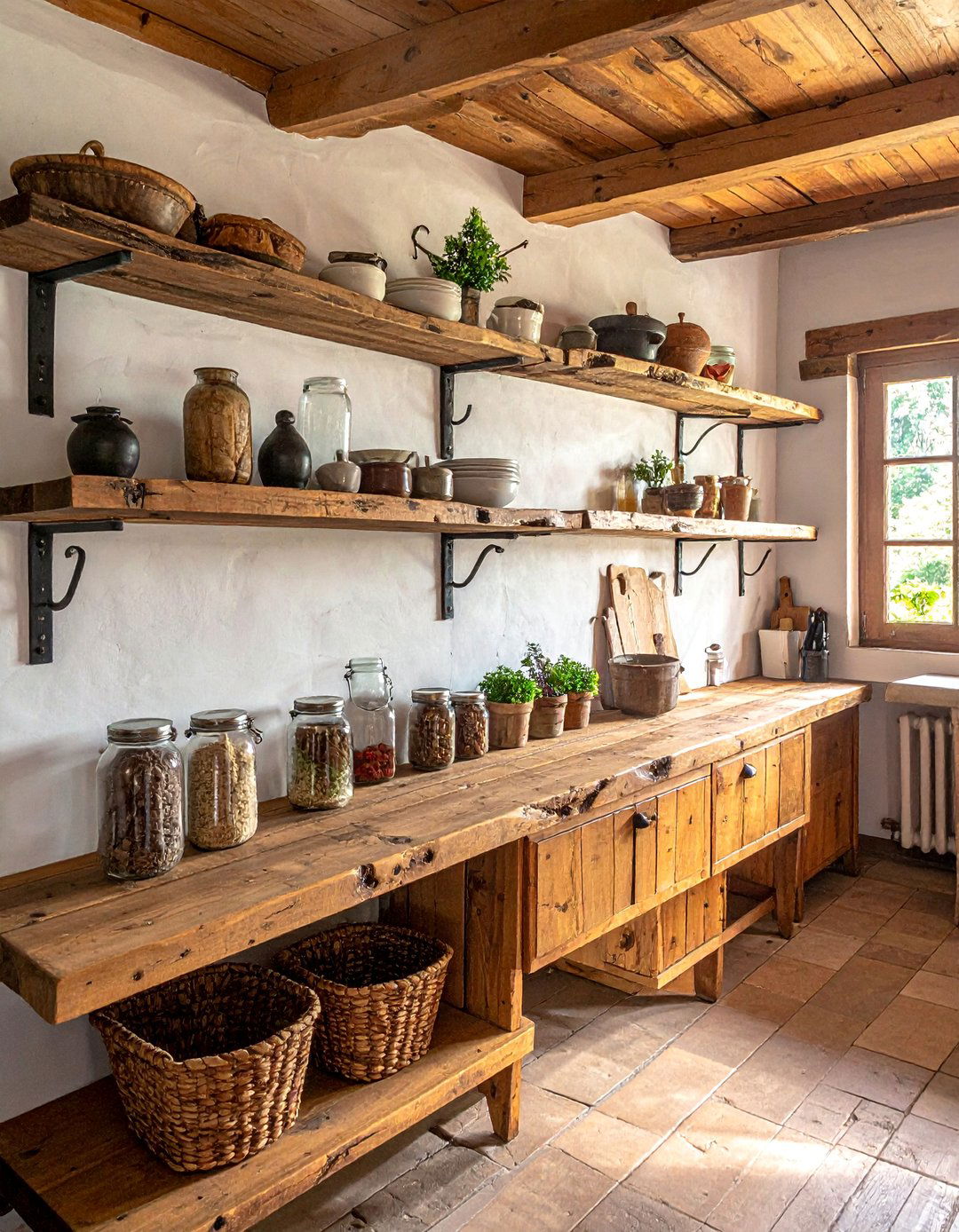
Display your primitive treasures with open wooden shelving that celebrates both functionality and rustic charm. Hand-hewn or roughly sawn boards mounted on wrought iron brackets create authentic storage that showcases your collection of stoneware, mason jars, and vintage kitchenware. These shelves provide easy access to daily essentials while serving as decorative displays for your primitive accessories. Arrange items in groups of odd numbers, mixing different heights and textures to create visual interest without appearing cluttered. Include practical storage baskets woven from natural materials like sweetgrass or pine needles. Open shelving reflects the practical nature of colonial kitchens where every item had its place and purpose. This storage solution keeps your favorite pieces visible while maintaining the honest, unadorned aesthetic that defines primitive design throughout your cooking space.
4. Stone Countertop Integration
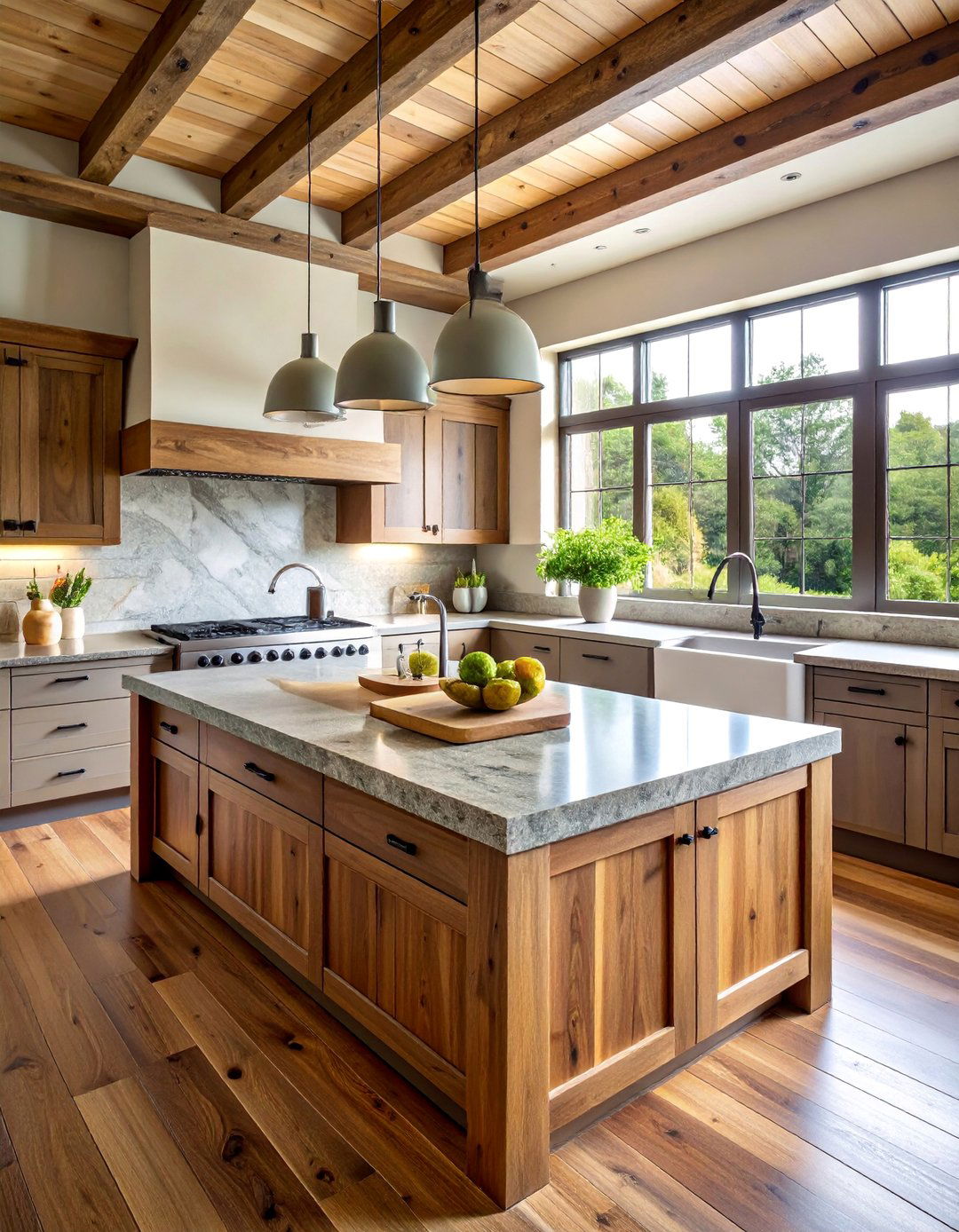
Natural stone countertops bring earthy authenticity to primitive kitchens while providing durable work surfaces that improve with age. Soapstone, limestone, and slate offer varying textures and colors that complement the rustic aesthetic while requiring minimal maintenance. These materials develop beautiful patina over time, enhancing their primitive character through daily use. Soapstone provides heat resistance perfect for placing hot pots directly from the stove, while limestone offers warm neutral tones that pair beautifully with reclaimed wood cabinetry. Consider leaving edges unfinished or slightly rough-hewn to maintain the handcrafted appearance. Stone countertops can be paired with wooden butcher block sections to create functional work zones that reflect the mixed-material approach common in colonial kitchens where practicality determined design choices.
5. Primitive Color Schemes
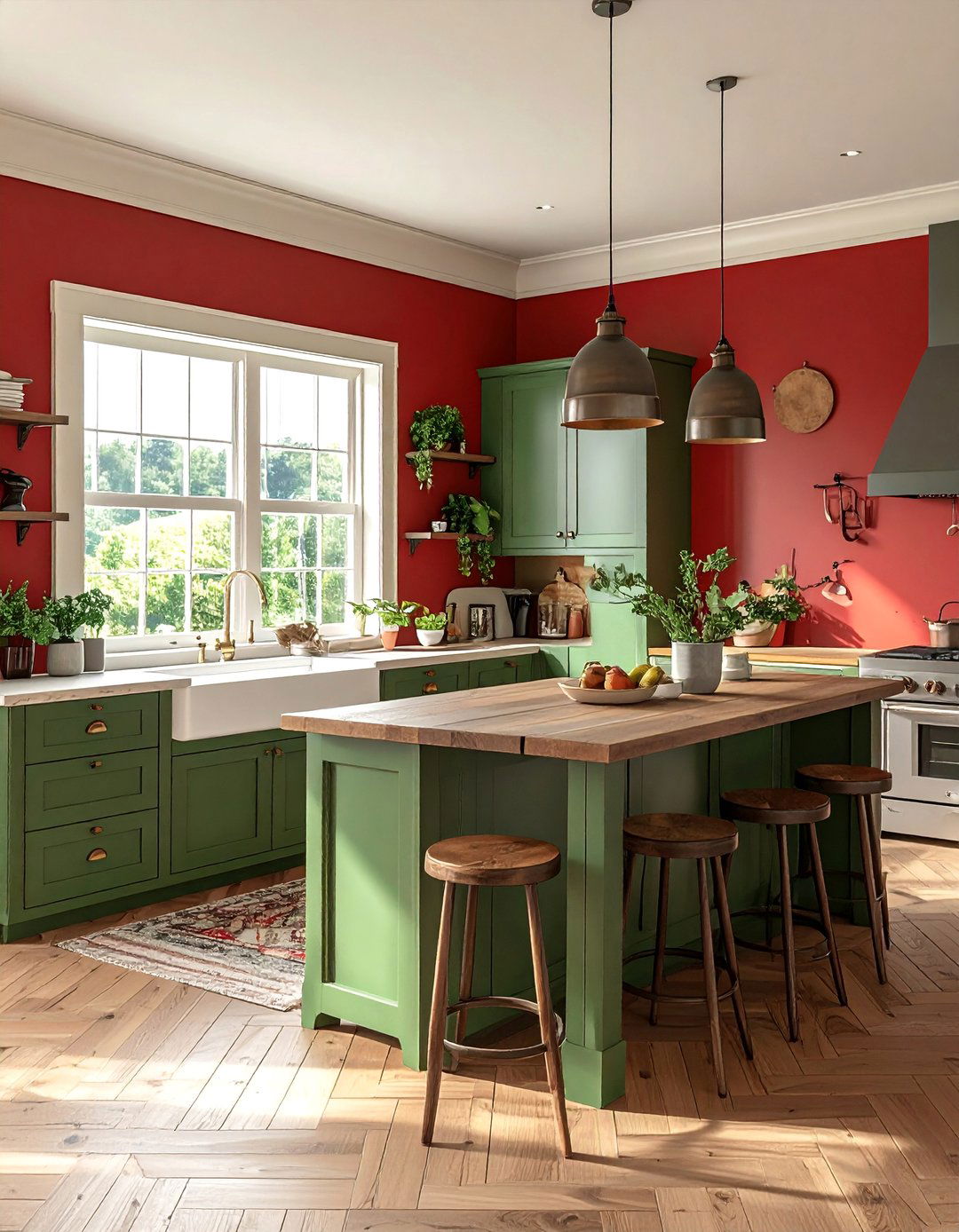
Create a warm, inviting atmosphere with earth-tone color palettes that reflect the natural world and colonial heritage. Rich browns, deep forest greens, and barn reds form the foundation of primitive kitchen design, creating cozy spaces that feel connected to nature. These colors can be applied to walls, cabinetry, or accent pieces to establish your primitive foundation. Complement these deeper tones with soft creams, weathered whites, and sage greens that add brightness without compromising the rustic aesthetic. Consider using milk paint or chalk paint finishes that provide authentic matte textures and can be distressed to show age and wear. The key lies in choosing colors that appear naturally aged rather than fresh from the paint store, creating the impression that your kitchen has evolved organically over time through generations of family use.
6. Cast Iron Hardware Selection
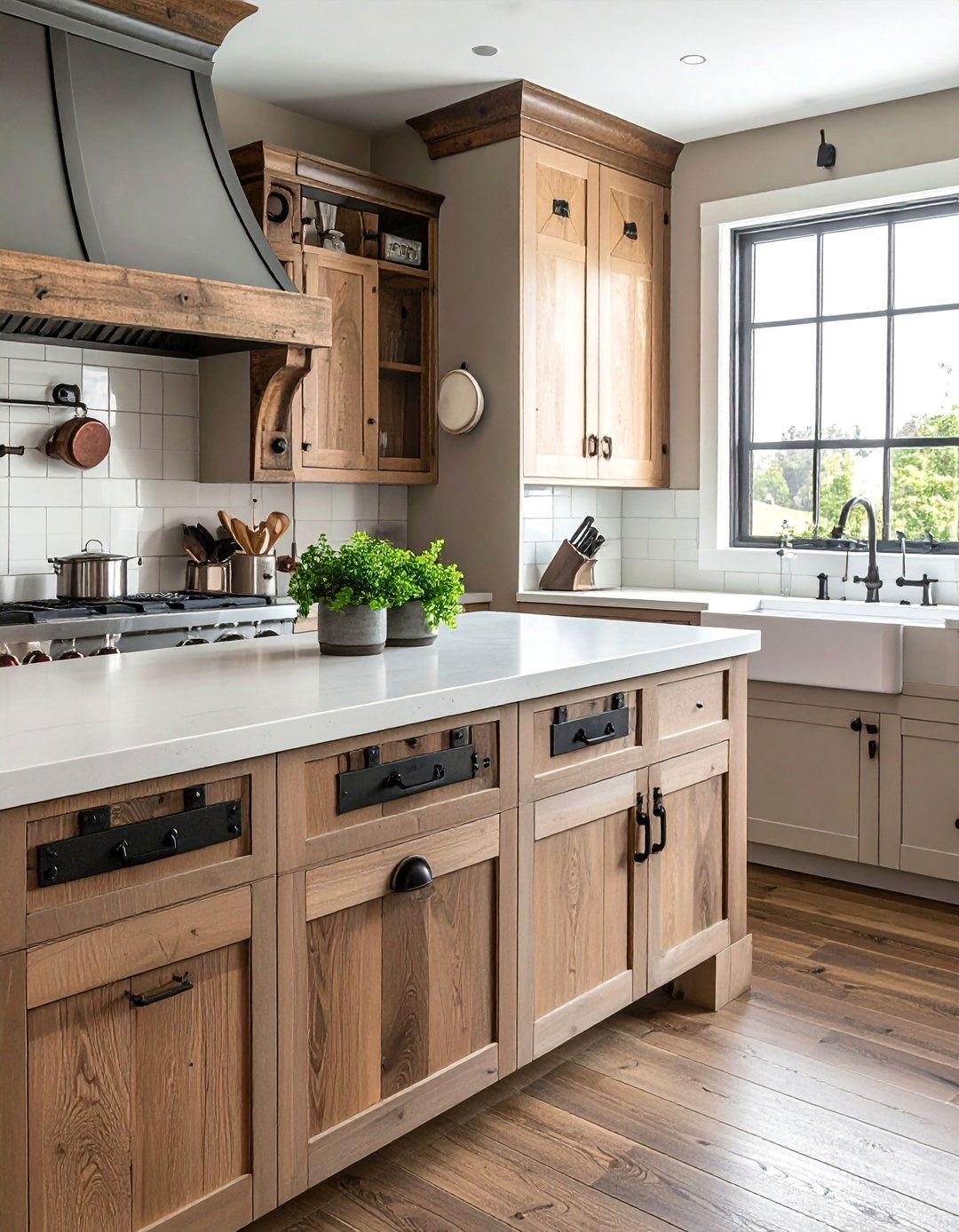
Authentic cast iron hardware adds substantial weight and historical accuracy to your primitive kitchen cabinetry and doors. These hand-forged pieces feature subtle variations and hammer marks that demonstrate traditional blacksmith techniques, developing natural patina over time that enhances their primitive appeal. Install cast iron hinges, pulls, and latches on cabinets and doors to achieve an authentic early American look that speaks to centuries of craftsmanship. Cast iron pot racks suspended from ceiling beams create functional storage while displaying cookware as decorative elements. Traditional blacksmith techniques produce hardware with subtle variations that add handcrafted character to every piece. Choose pieces with hand-forged details like twisted rings and irregular textures that demonstrate authentic metalworking traditions passed down through generations of artisans.
7. Beadboard Backsplash Installation
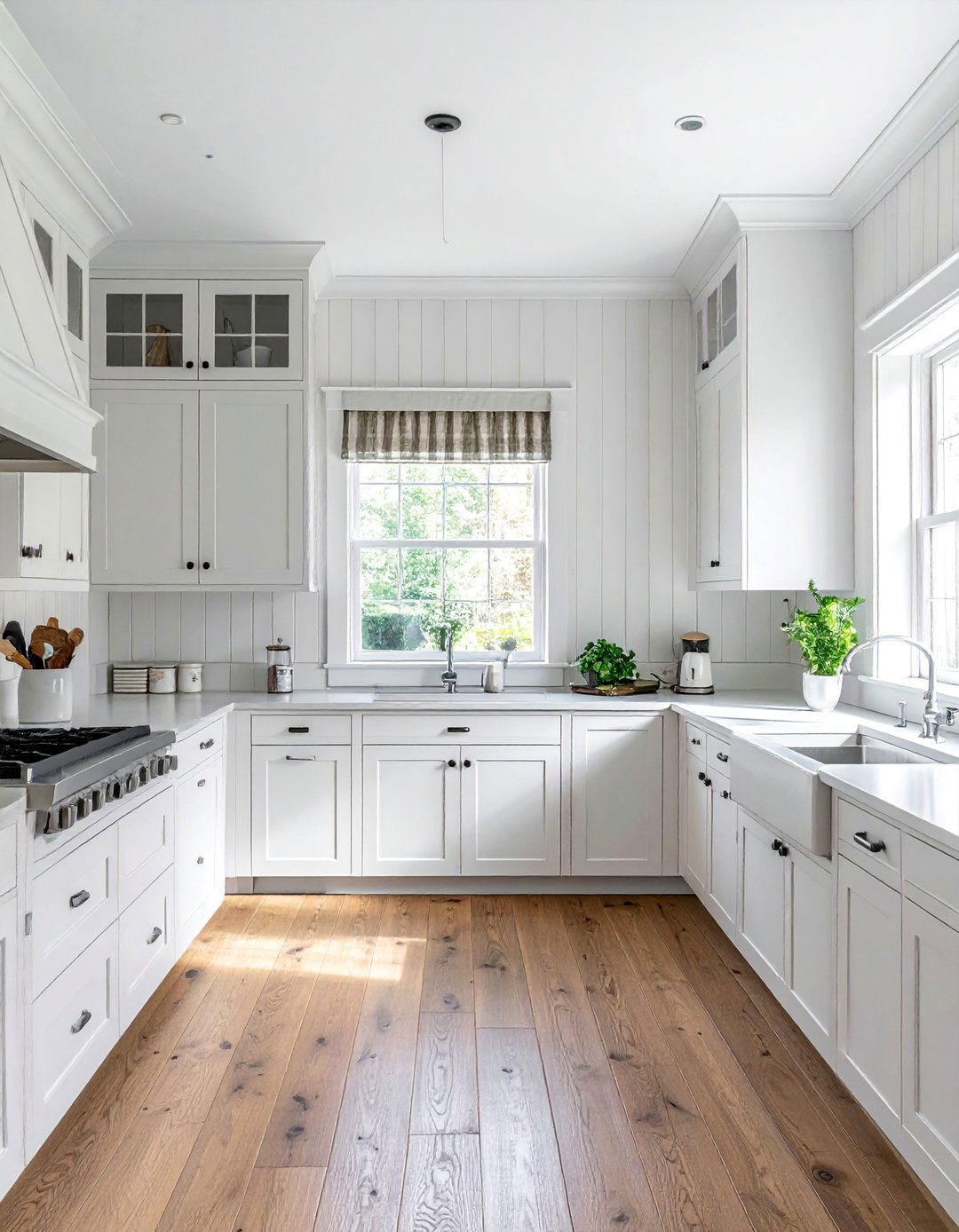
Install classic beadboard paneling as your backsplash to achieve timeless primitive charm that protects walls while adding authentic texture. This traditional wood paneling features narrow vertical grooves that create visual interest and reflect colonial building techniques used throughout early American homes. Choose from painted or natural wood finishes that complement your overall color scheme while providing easy-to-clean protection behind work areas. Beadboard can extend from countertop to ceiling or stop at window height to create practical display ledges for herbs and primitive accessories. The vertical lines of beadboard make ceilings appear higher while adding architectural detail that enhances the handcrafted character of your space. This classic choice remains popular because it successfully bridges historical authenticity with modern functionality, creating beautiful backgrounds for displaying primitive collections.
8. Mason Jar Organization Systems
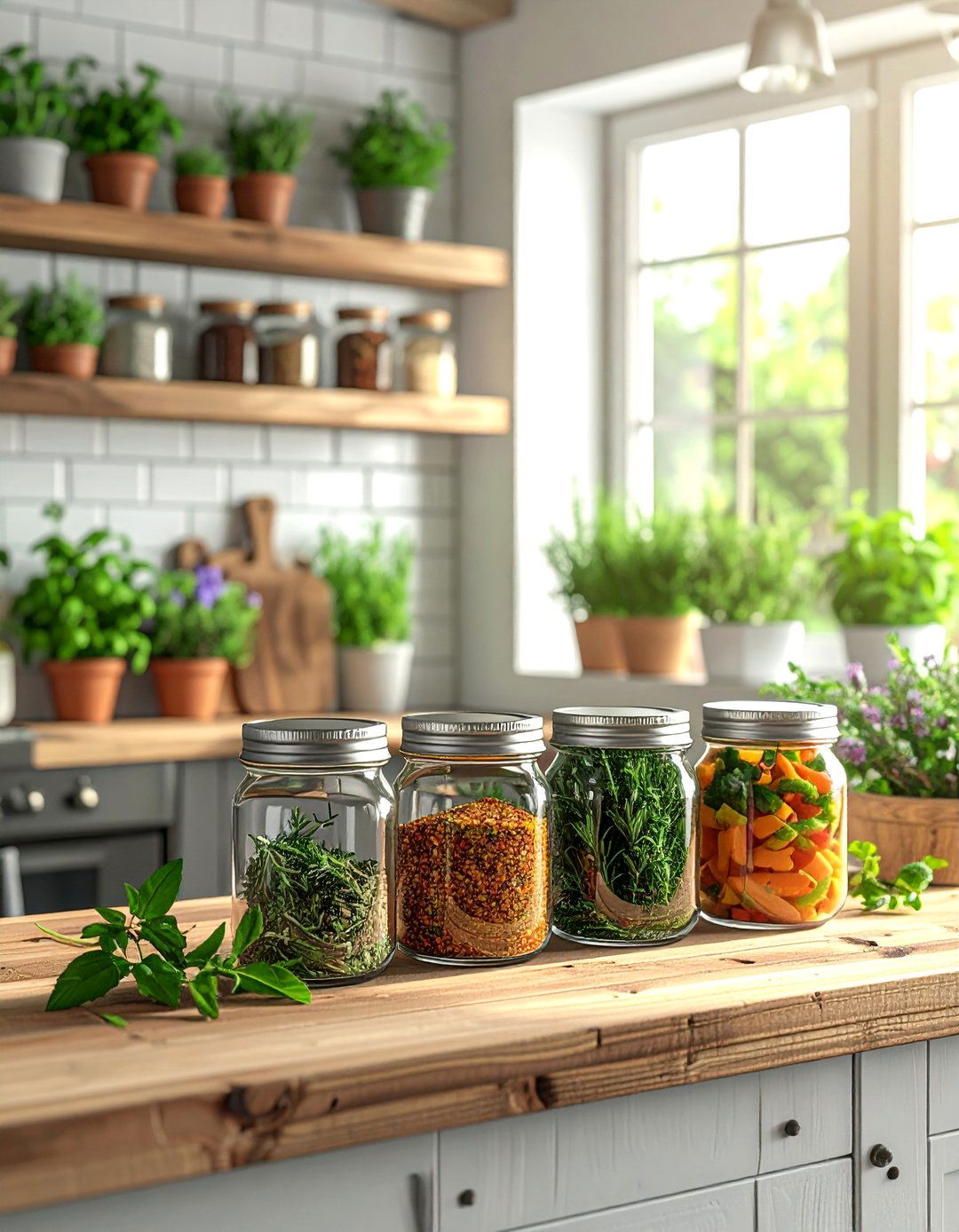
Transform everyday storage needs with versatile mason jar solutions that provide both function and authentic primitive charm throughout your kitchen. These glass containers excel at storing dry goods, displaying fresh herbs, and organizing small kitchen essentials while maintaining the honest simplicity that defines primitive design. Mount mason jars under shelves or inside cabinet doors to maximize storage efficiency while keeping ingredients visible and accessible. Create spice storage systems using uniform-sized jars with handwritten labels that reflect the handmade aesthetic. Use larger mason jars for storing bulk items like flour, sugar, and coffee beans on open shelving where they become decorative elements. The clear glass allows you to monitor contents while the simple metal lids can be replaced with fabric covers tied with natural twine for seasonal variety.
9. Wrought Iron Lighting Fixtures
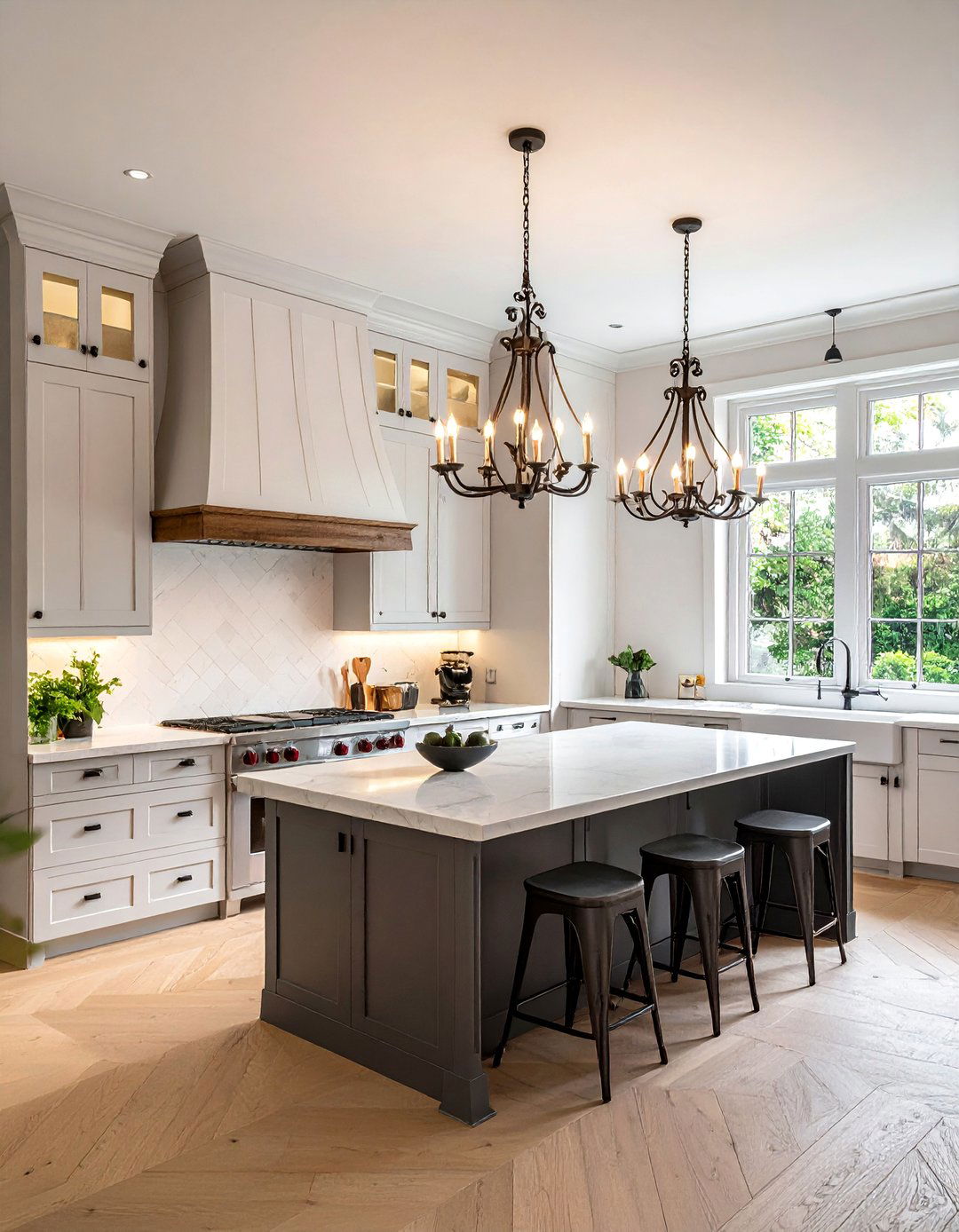
Illuminate your primitive kitchen with hand-forged wrought iron lighting that provides both function and historical authenticity. Choose pendant lights with candelabra-style bulbs that mimic the flickering candlelight of colonial times, casting warm light throughout your cooking space. Hand-forged details like twisted chains, decorative metalwork, and period-appropriate finishes ensure historical accuracy while providing modern electrical convenience. Install multiple pendants at varying heights to create layered lighting effects while maintaining primitive authenticity throughout your kitchen. Bell jar pendants with etched star patterns reflect Federal-era styling popular in finer colonial homes. Many designs incorporate clear or seeded glass panels that diffuse light warmly throughout the space, enhancing wood tones and earth-colored surfaces that define your primitive aesthetic.
10. Butcher Block Work Surfaces
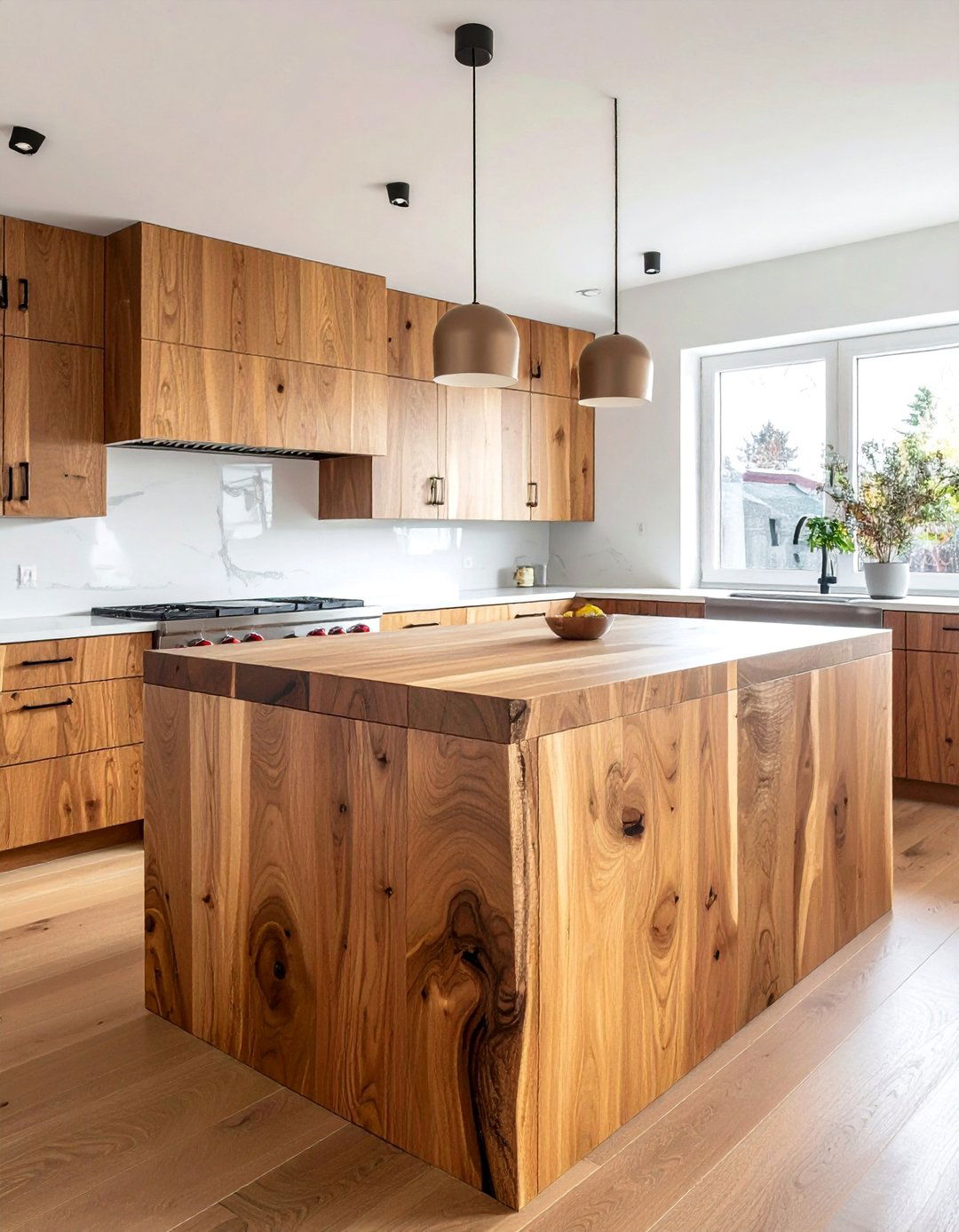
Incorporate solid wood butcher block surfaces that provide functional work areas while maintaining the handcrafted character essential to primitive kitchen design. These thick wooden slabs, traditionally made from maple, oak, or cherry, develop beautiful patina through daily use while providing excellent cutting and prep surfaces. End-grain construction offers superior durability and knife-friendly surfaces that improve with age and regular oiling. Create a kitchen island using butcher block topped with a reclaimed wood base, or install butcher block sections alongside stone countertops for varied work zones. The natural wood grain and honest construction celebrate the craftsmanship traditions that defined colonial woodworking. Regular maintenance with food-safe oils keeps the wood protected while enhancing its natural beauty and ensuring decades of reliable service in your primitive kitchen.
11. Vintage Stoneware Collections
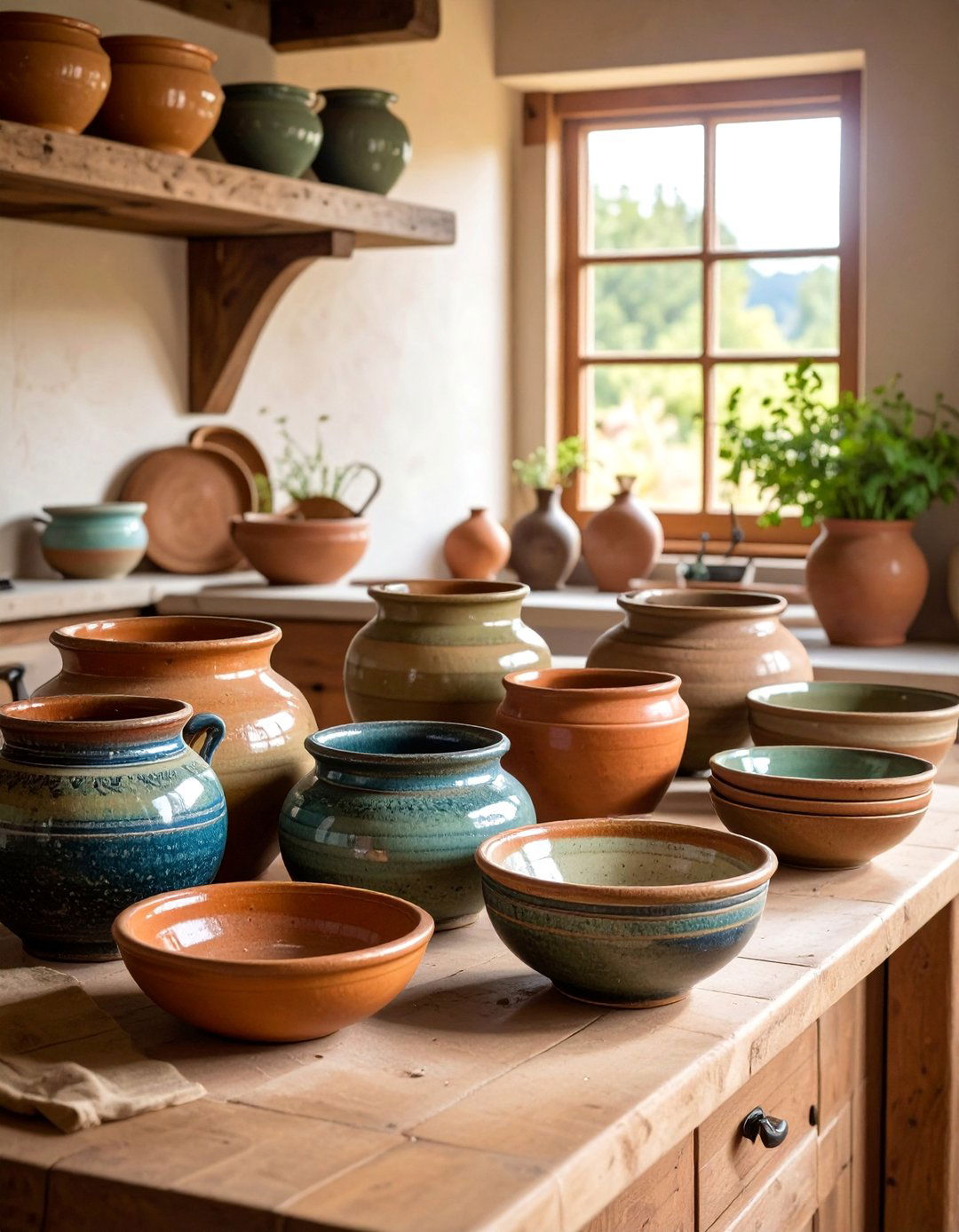
Display functional stoneware pieces that serve both practical storage needs and decorative purposes throughout your primitive kitchen. Salt-glazed crocks, bowls, and pitchers provide organic shapes and earth-tone glazes that complement your rustic design scheme. These handcrafted pieces feature simple, unadorned shapes that reflect colonial utilitarian traditions rather than elaborate decorative styles. Mix different sizes and shapes to create dynamic groupings that suggest collections built over time through practical use. Choose pottery with natural clay colors, cobalt blue decorations, and subtle glaze variations that add warmth and humanity to your space. Use larger pieces for storing utensils, dried goods, or seasonal displays while smaller items serve as decorative accents. The handcrafted irregularities and natural color variations in authentic stoneware add character that connects your kitchen to traditional ceramic arts.
12. Primitive Kitchen Islands
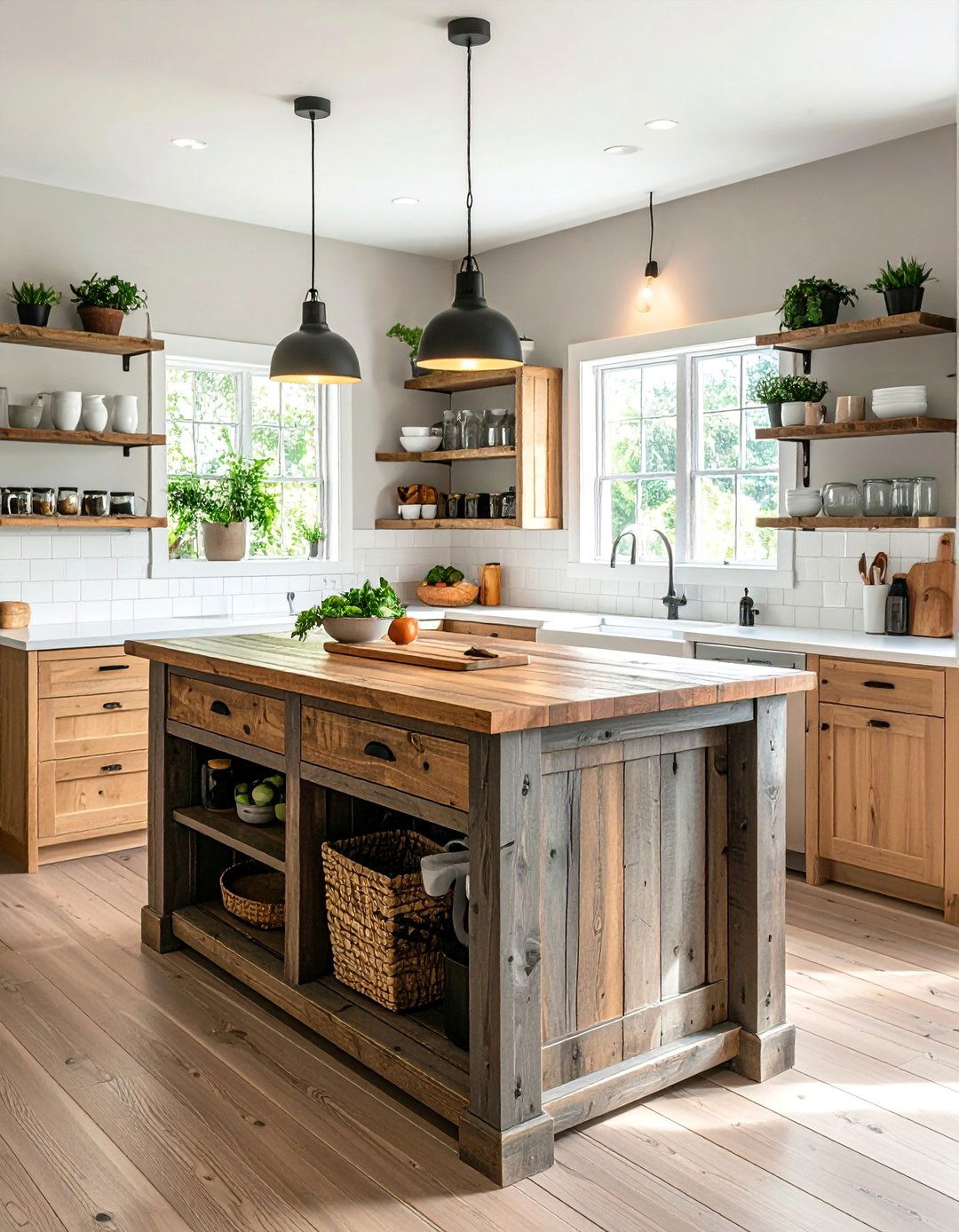
Design a functional kitchen island using distressed wood construction that serves as both workspace and focal point while maintaining rustic charm throughout your cooking area. Build your island from reclaimed barn wood with a thick butcher block top, creating a substantial centerpiece that anchors your primitive design. Include practical storage solutions like open shelving for displaying stoneware collections, primitive baskets, and everyday essentials. Add seating with rush-seat stools or ladder-back chairs that reflect colonial furniture traditions. Install functional elements like pot racks, towel bars, and spice storage that maximize the island's utility while maintaining authentic styling. How can you create a centerpiece that embodies primitive authenticity while meeting modern cooking needs? The answer lies in combining traditional construction techniques with contemporary functionality, creating islands that feel historically accurate while serving today's kitchen requirements.
13. Natural Fiber Textiles
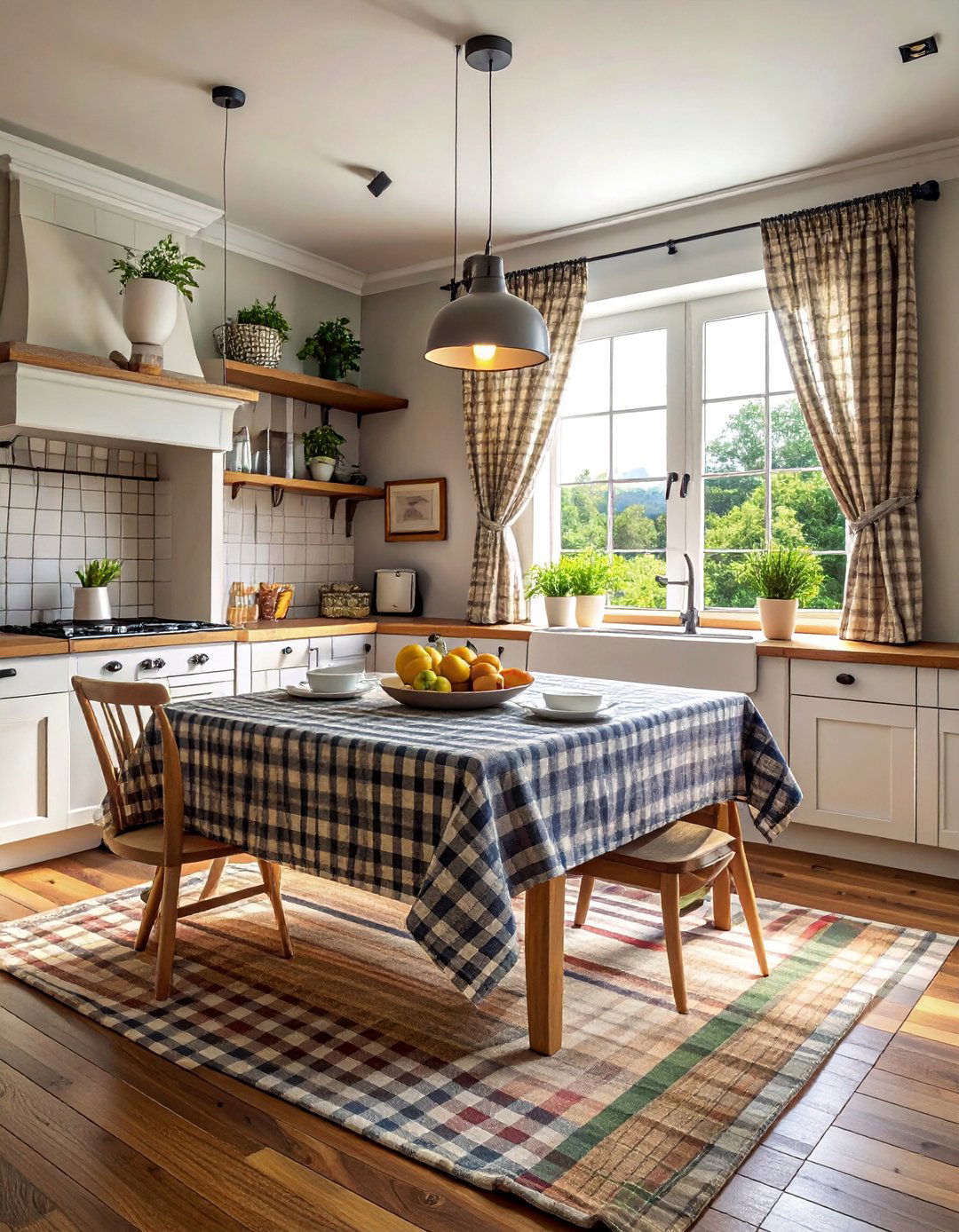
Soften your primitive kitchen with authentic textiles woven from natural fibers that add warmth and texture throughout the space. Choose linen, cotton, and hemp fabrics in earthy tones that complement your color palette while providing practical benefits. Install gingham or homespun curtains that filter natural light while maintaining privacy, selecting patterns and colors that reflect colonial textile traditions. Add table runners, placemats, and dish towels featuring simple checks, stripes, or solid colors that avoid overly decorative patterns. Natural fiber textiles age beautifully, developing character through regular use and washing that enhances their primitive appeal. Layer different textures and patterns in subtle ways that create visual interest without overwhelming your space. These honest materials connect your kitchen to agricultural traditions where function determined form and beauty emerged from practical necessity.
14. Herb Garden Integration
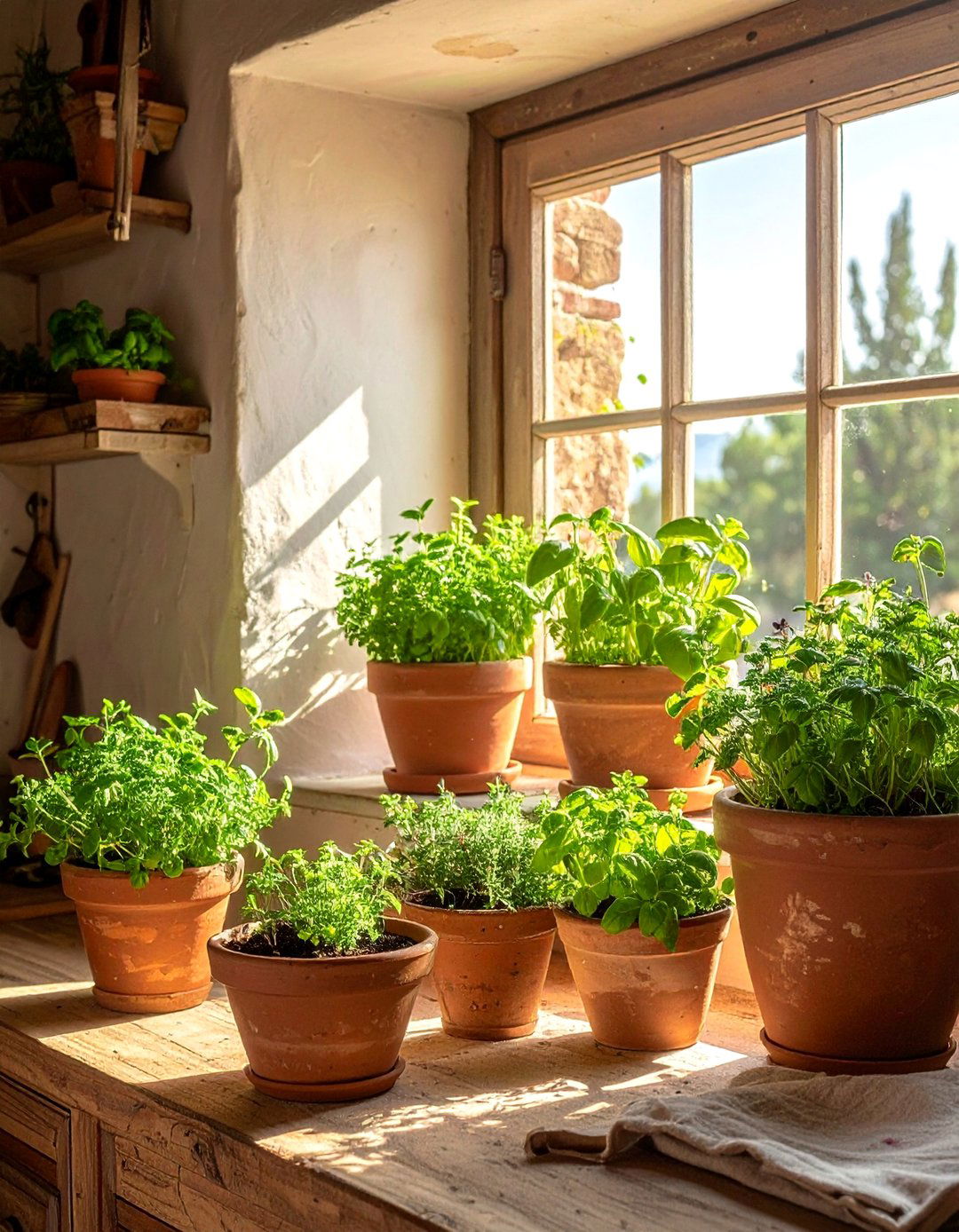
Create a living herb garden that brings fresh flavors and natural beauty into your primitive kitchen while reflecting colonial self-sufficiency traditions. Plant herbs in terracotta pots, wooden boxes, or galvanized containers that complement your rustic aesthetic while providing fresh seasonings for cooking. Arrange herb containers on windowsills, open shelving, or dedicated display areas where they receive adequate light while remaining easily accessible. Choose traditional culinary herbs like thyme, sage, rosemary, and oregano that were staples in colonial gardens and cooking. The fresh green colors and natural textures of growing herbs add life to your space while connecting you to the garden-to-table traditions that sustained colonial families. How does fresh herb availability change your cooking approach and connection to seasonal flavors? Maintaining herbs indoors extends growing seasons while keeping essential flavors within reach year-round.
15. Copper Pot Displays
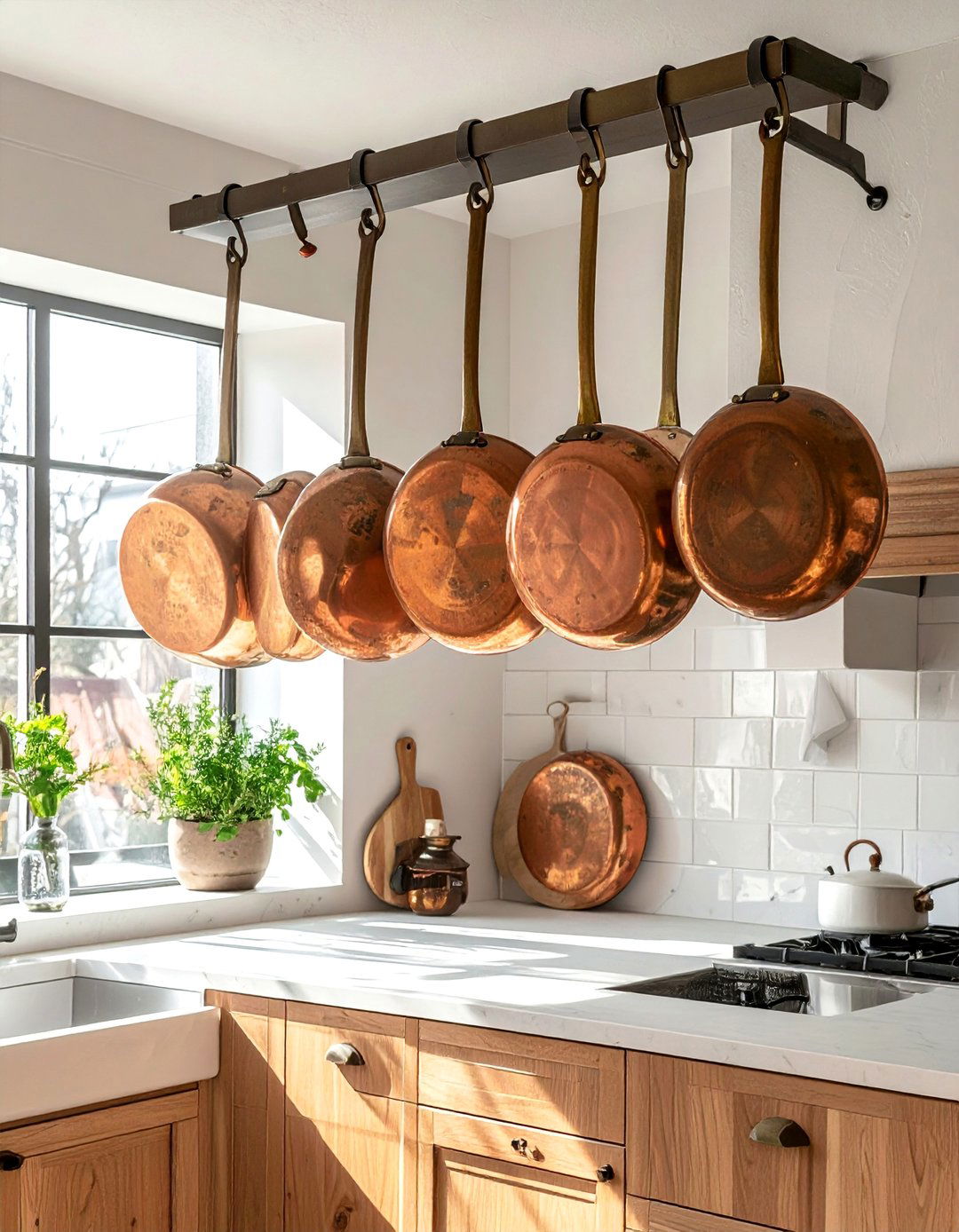
Showcase traditional copper cookware that serves both functional cooking needs and decorative purposes throughout your primitive kitchen. Hang copper pots and pans from ceiling-mounted racks or wall-mounted systems that keep cookware accessible while creating stunning visual displays. The warm tones of copper complement earthy color schemes while developing natural patina that enhances their primitive character over time. Choose pieces with traditional shapes and substantial construction that reflect historical cooking methods and craftsmanship traditions. Copper's excellent heat conduction makes these pieces valuable cooking tools while their beautiful appearance justifies prominent display locations. Polish copper occasionally to maintain brightness or allow natural tarnishing for authentic aged appearance. The combination of function and beauty in copper cookware perfectly embodies primitive design principles that celebrate honest materials and traditional craftsmanship.
16. Brick Wall Accents
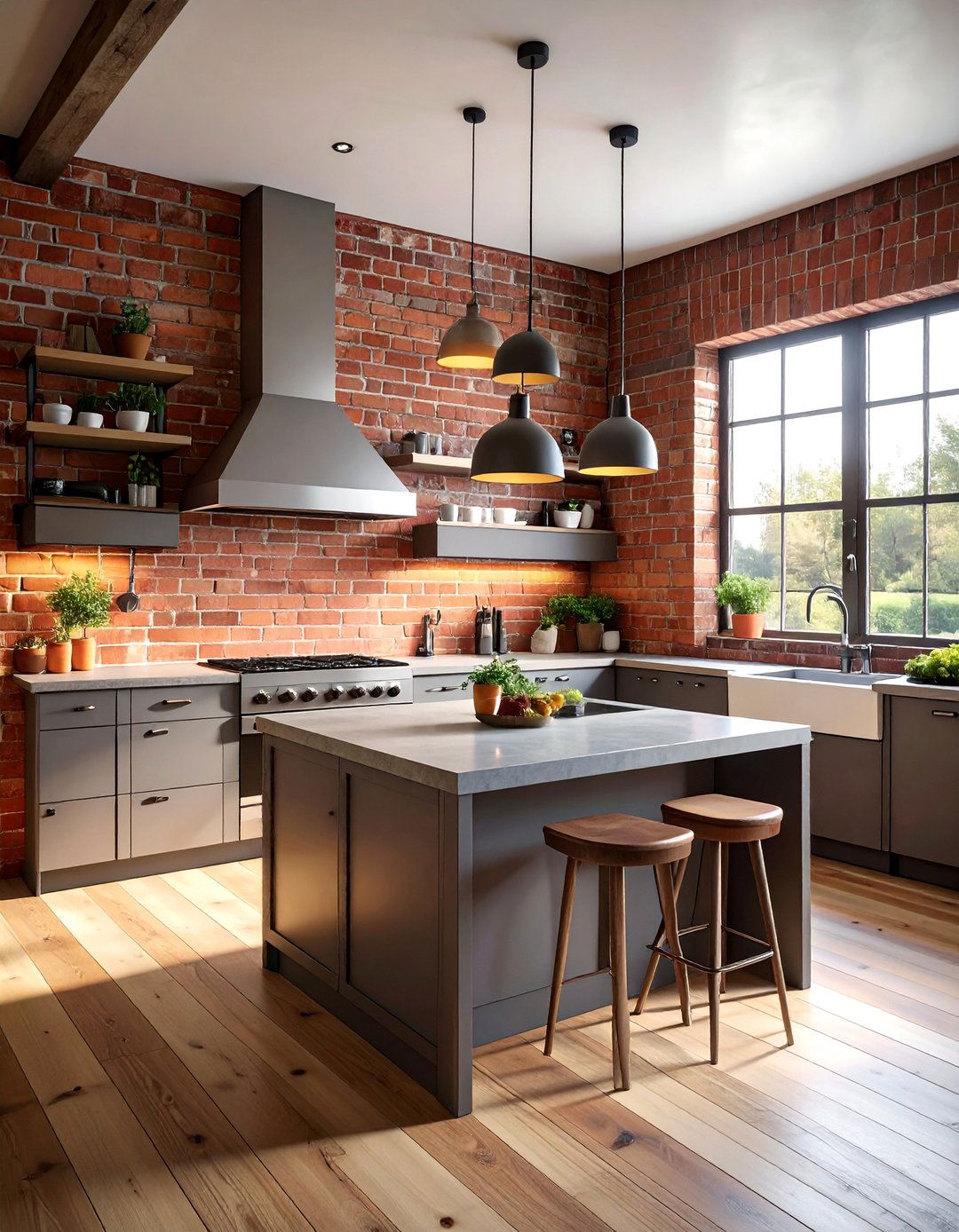
Introduce exposed brick elements that add textural interest and historical authenticity to your primitive kitchen walls. Whether using original brick from older homes or installing new brick with aged appearance, these masonry elements connect your space to colonial building traditions. Brick provides excellent backsplash protection behind stoves while creating focal points that anchor your design. The natural color variations and irregular textures in authentic brick add warmth and character that enhances the handcrafted aesthetic throughout your kitchen. Consider whitewashing or limewashing brick surfaces for softer appearance while maintaining textural interest. Brick pairs beautifully with reclaimed wood, natural stone, and wrought iron elements that define primitive kitchens. The durability and timeless appeal of brick ensures these accents will continue enhancing your space for generations while requiring minimal maintenance to preserve their rustic charm.
17. Seasonal Decorating Elements
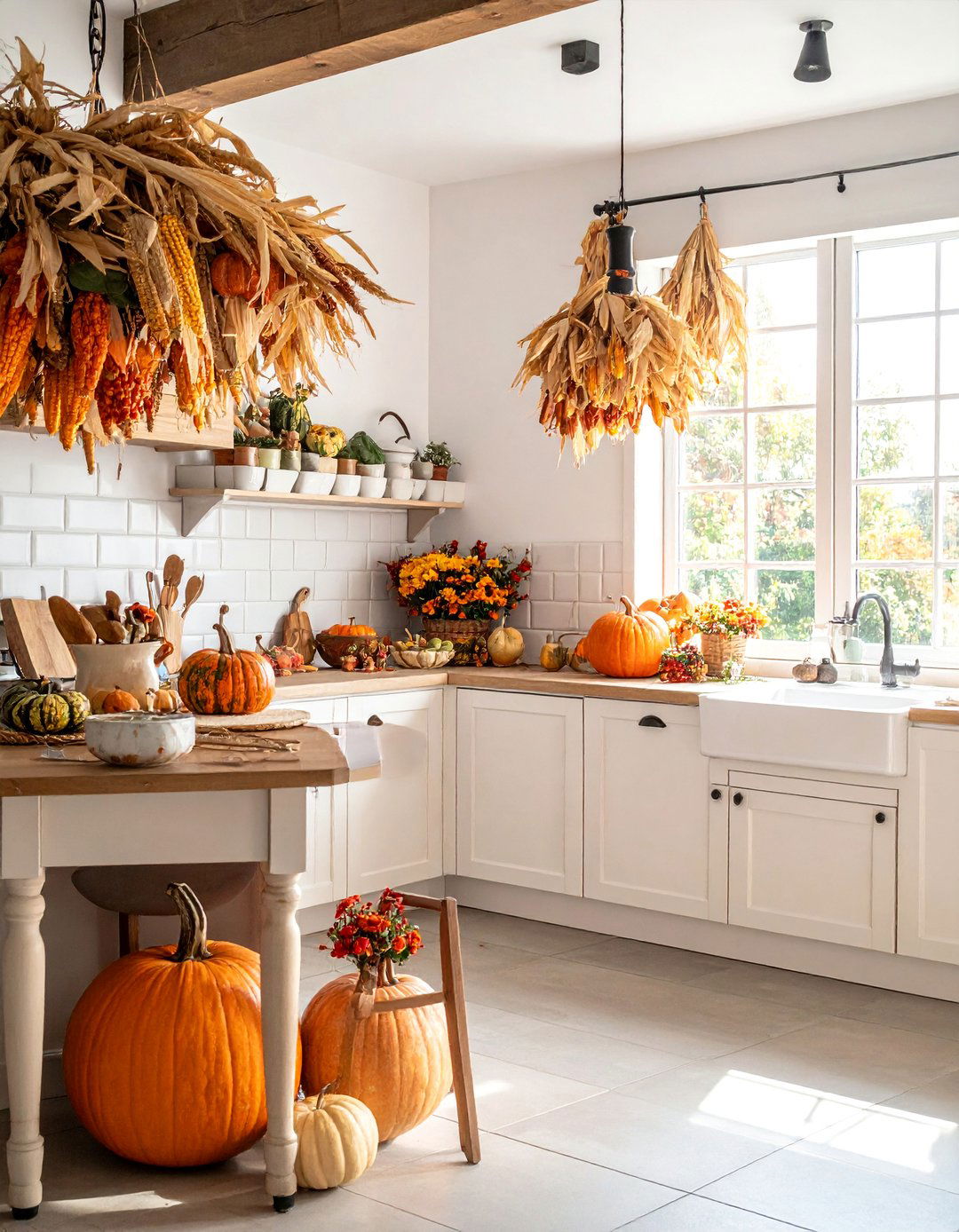
Celebrate the changing seasons with natural decorative elements that reflect the agricultural rhythms that guided colonial life. Spring decorations feature fresh herbs, early flowers, and green tones that celebrate renewal and growth throughout your kitchen. Summer displays incorporate fresh fruits, vegetables, and lighter fabrics that reflect harvest abundance and warm weather. Autumn brings rich oranges, deep reds, and golden yellows through pumpkins, gourds, and dried corn arrangements that celebrate harvest time. Winter decorations use evergreen boughs, pinecones, and warm candlelight to create cozy atmospheres during cold months. Choose accessories made from natural materials like wood, burlap, and dried botanicals rather than artificial alternatives. Rotate table runners, chair cushions, and decorative accents to reflect seasonal changes without requiring major design overhauls. Store seasonal items in primitive containers that become decorative elements themselves.
18. Ladder-Back Seating
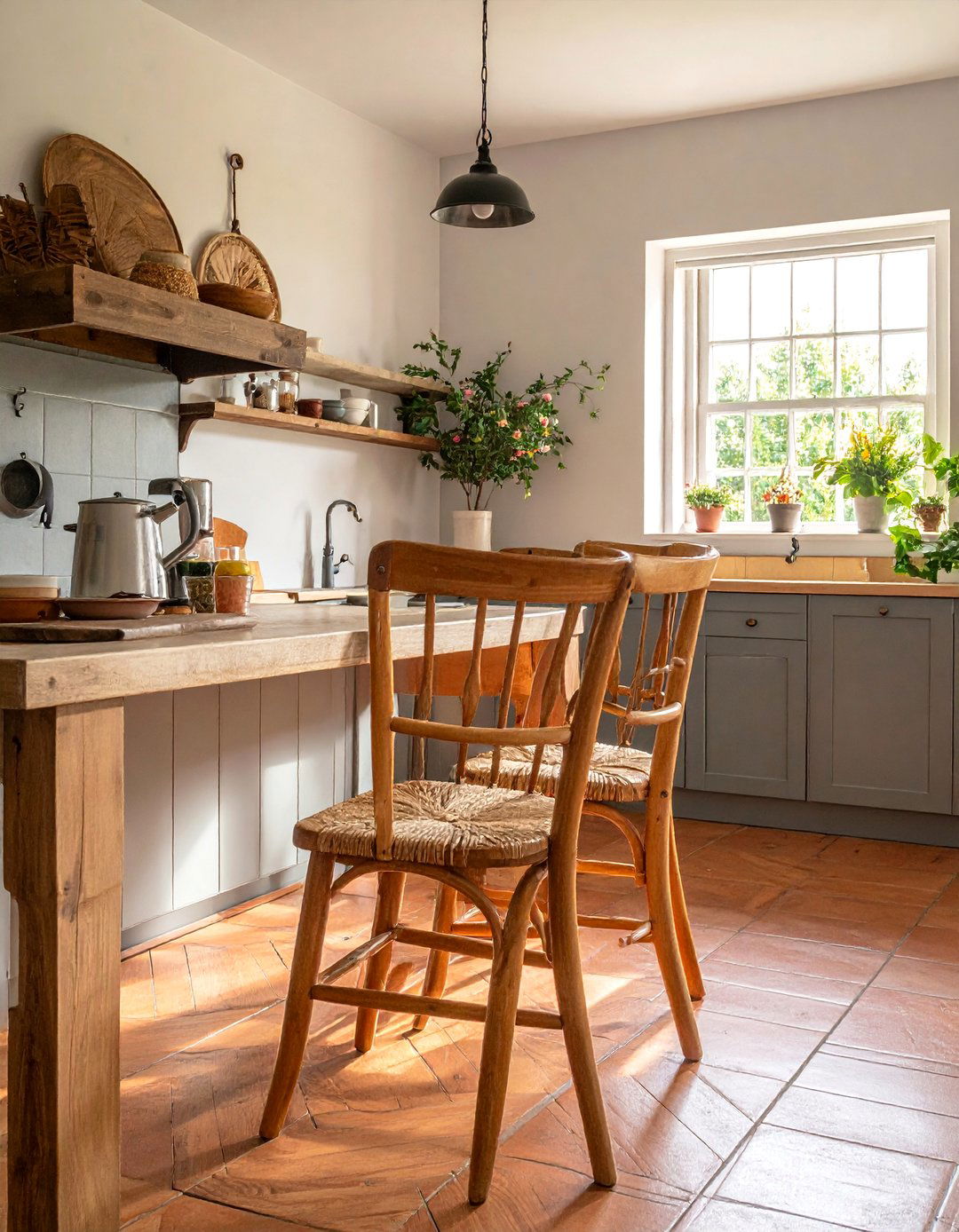
Furnish your primitive kitchen with traditional ladder-back chairs that provide comfortable seating while maintaining authentic colonial styling throughout your dining area. These classic chairs feature simple construction with woven rush or split-oak seats that develop character through use. The vertical slat design reflects colonial furniture-making traditions that emphasized function over ornamentation while creating pieces built to last generations. Choose chairs in natural wood finishes or painted surfaces that show appropriate wear and aging. Mix matched sets with individual pieces collected over time to create the eclectic appearance common in colonial homes where furniture accumulated gradually. Ladder-back chairs work beautifully around farmhouse tables, kitchen islands, or as accent seating throughout your space. Their honest construction and timeless design ensure these pieces will enhance your primitive kitchen while providing reliable seating for family gatherings and daily meals.
19. Punched Tin Accessories
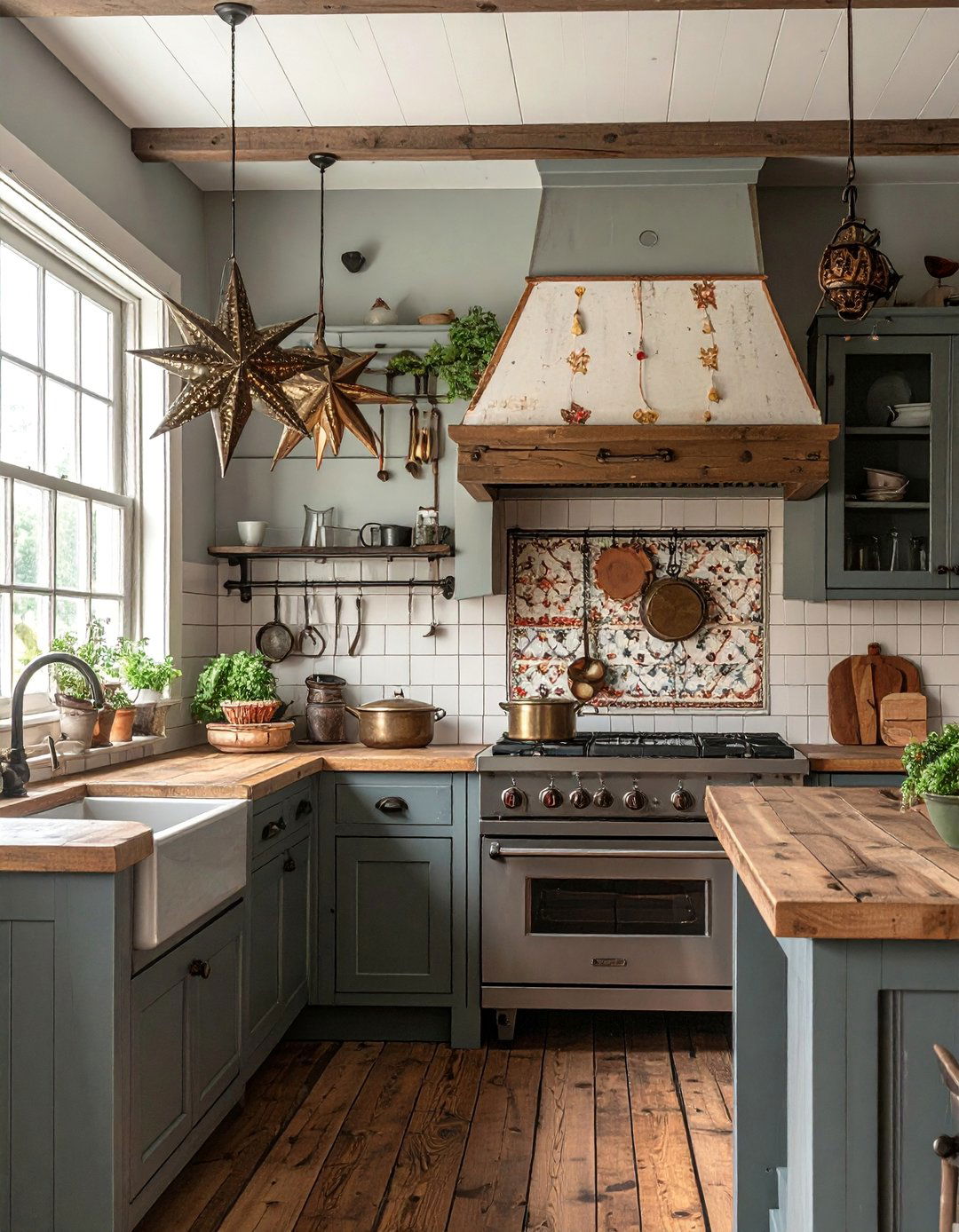
Add authentic punched tin accessories that provide functional lighting and decorative elements throughout your primitive kitchen space. These handcrafted pieces feature traditional patterns like stars, hearts, and geometric motifs that reflect Pennsylvania Dutch and early American folk art traditions. Punched tin lanterns create ambient lighting that casts intricate shadows while providing gentle illumination for evening activities. Choose from various finishes including textured black, antiqued brass, or weathered copper that complement your primitive color scheme. Mount punched tin sconces on walls for additional lighting while maintaining the handcrafted aesthetic throughout your space. Cabinet door inserts made from punched tin provide ventilation while adding decorative elements that enhance your cabinetry. These accessories are handcrafted using centuries-old techniques that ensure authentic quality and historical accuracy. The folk art designs glow warmly when illuminated from within, creating cozy atmospheres perfect for family gatherings.
20. Antique Scale Collections
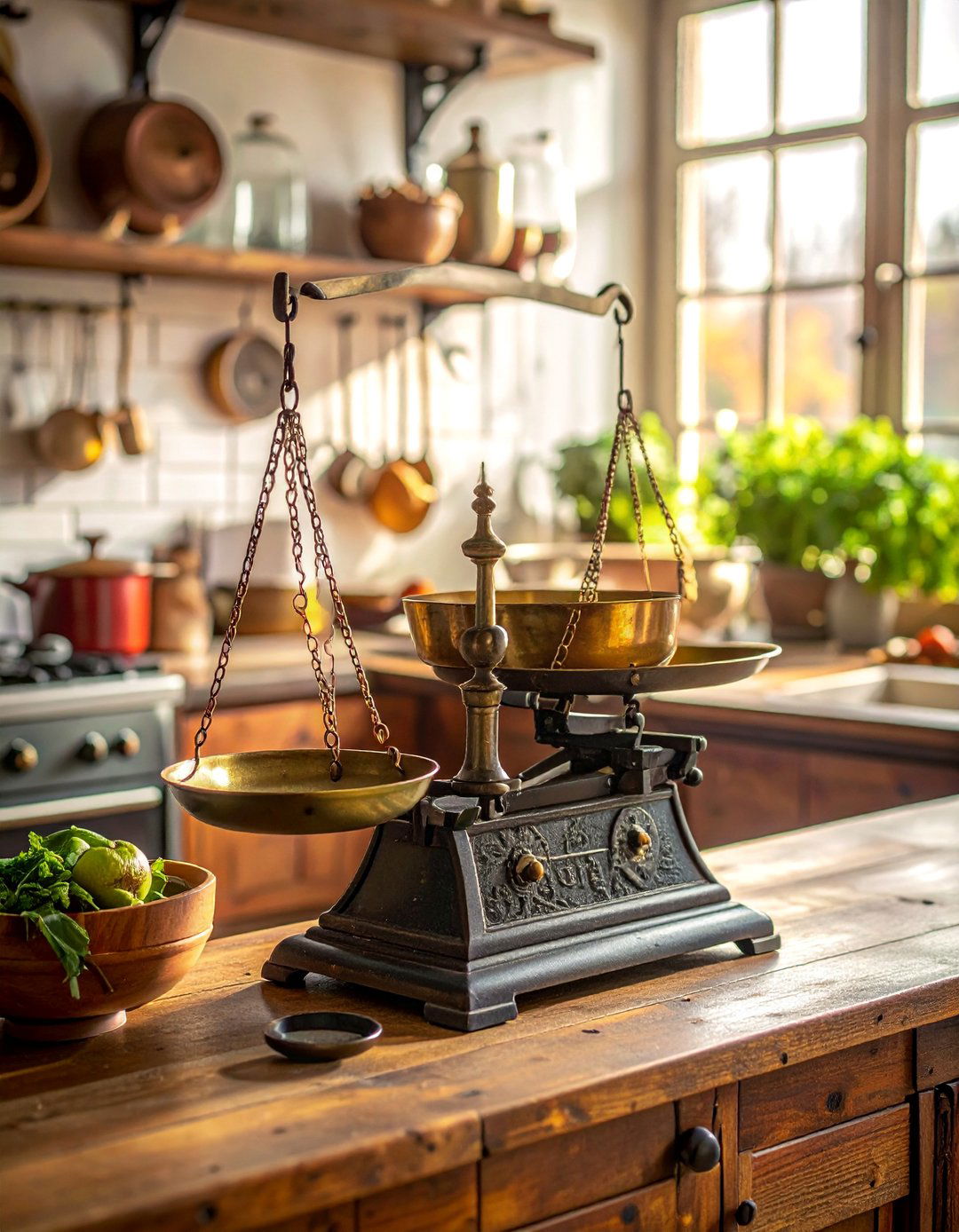
Display functional antique scales that serve both practical measuring needs and decorative purposes while celebrating the precision required in colonial cooking and commerce. These mechanical devices feature cast iron construction, brass fittings, and honest engineering that reflects traditional craftsmanship and attention to detail. Arrange scales of varying sizes on open shelving, countertops, or primitive hutches where they create visual interest while remaining accessible for occasional use. What stories do these measuring tools tell about the careful resource management that characterized colonial life? Antique scales remind us of times when precise measurements ensured successful bread baking, preserving, and household management. Choose scales with original patina and working mechanisms that demonstrate their continued functionality. The combination of form and function in these pieces perfectly embodies primitive design principles that celebrate practical beauty and enduring craftsmanship throughout your kitchen space.
Conclusion:
Creating a primitive kitchen requires thoughtful selection of authentic materials, traditional techniques, and time-honored design principles that celebrate simplicity and functionality. From reclaimed wood cabinetry and farmhouse sinks to mason jar storage and seasonal decorating, each element contributes to an atmosphere that honors colonial heritage while meeting modern needs. The key lies in choosing pieces that appear naturally aged rather than artificially distressed, creating spaces that feel genuinely connected to historical traditions. Natural materials like stone, wood, and wrought iron provide the foundation while earth-tone color palettes establish warmth throughout your space. Remember that primitive design emphasizes honest construction, practical functionality, and the beauty found in everyday objects that serve multiple purposes while telling stories of simpler times.

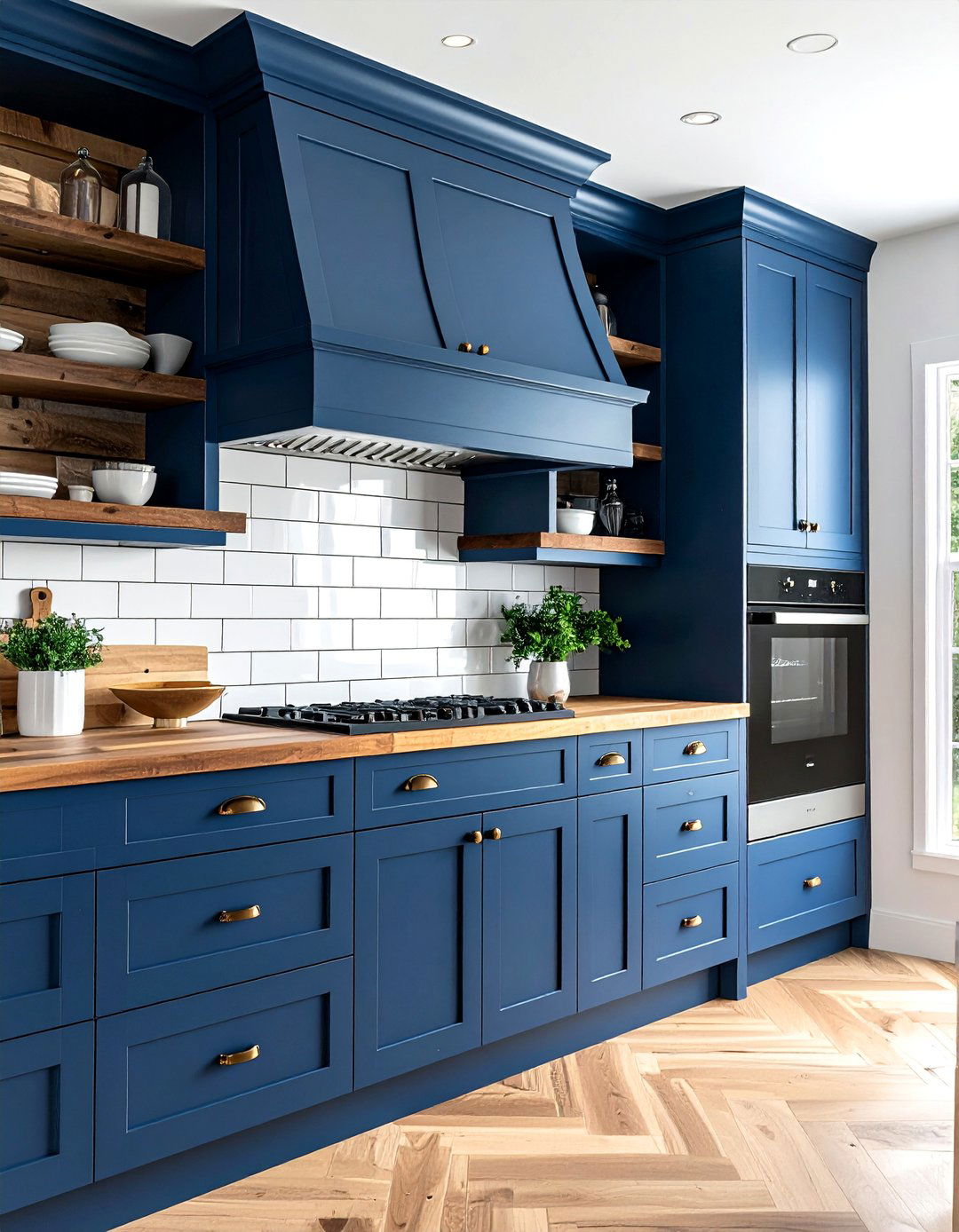
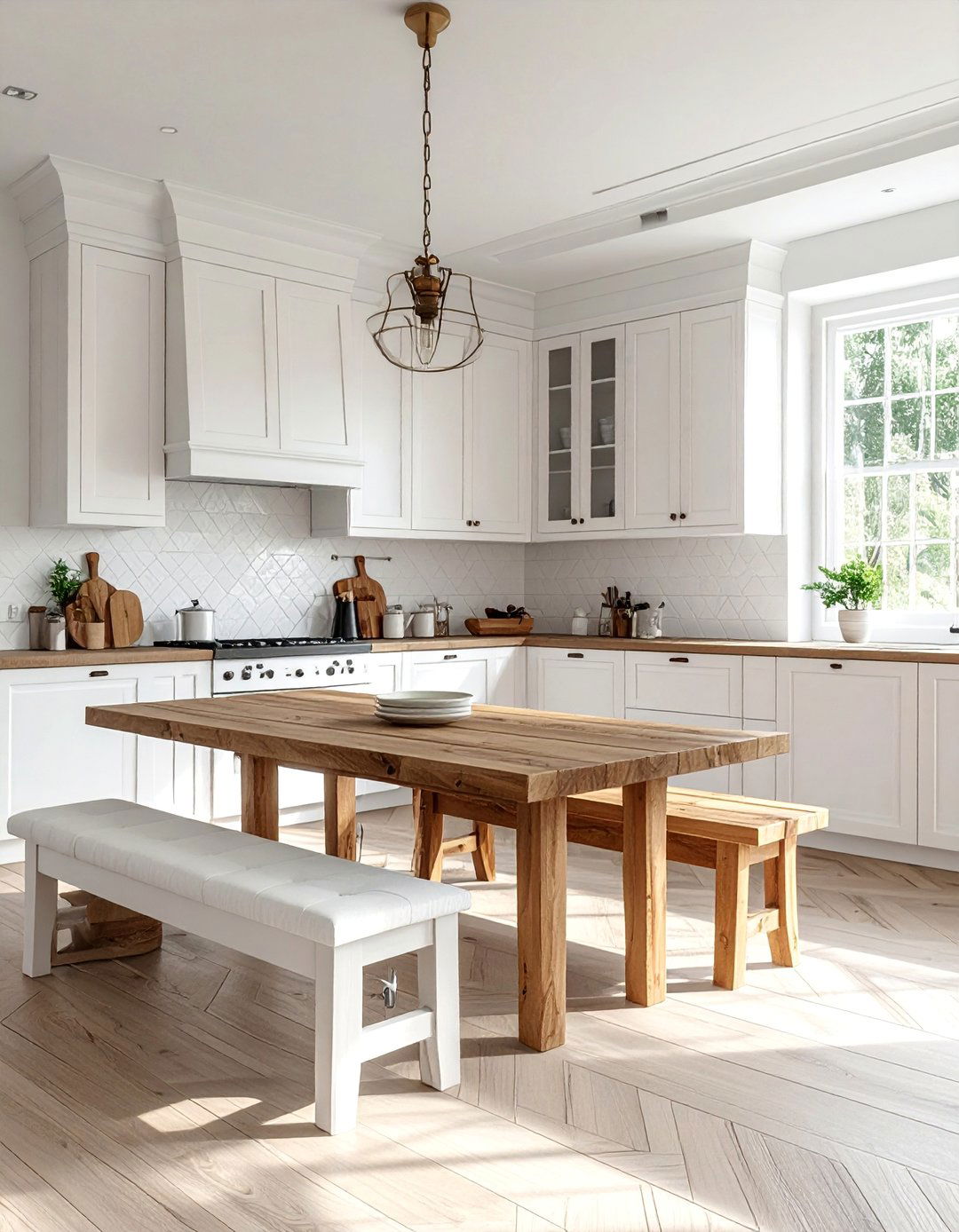
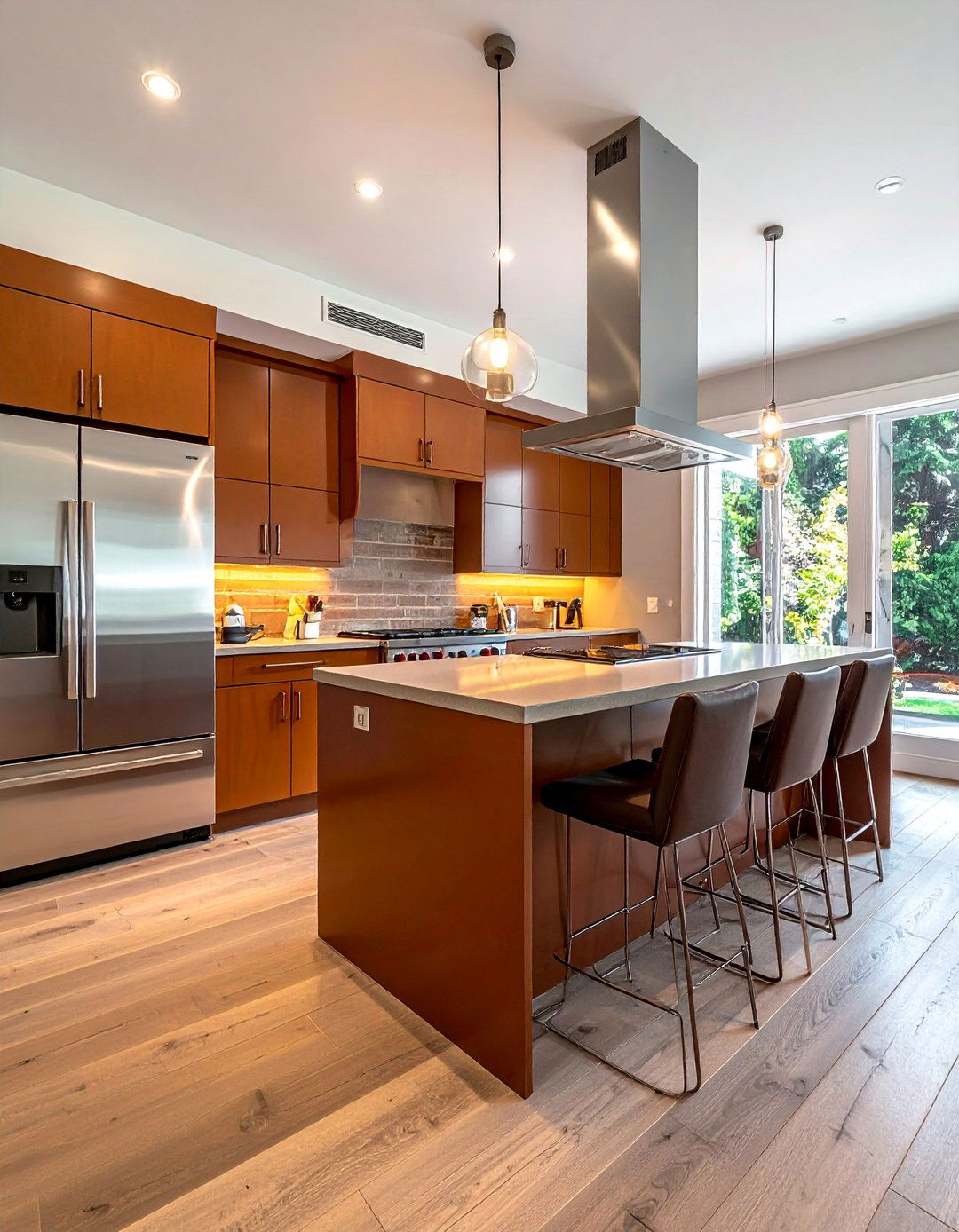
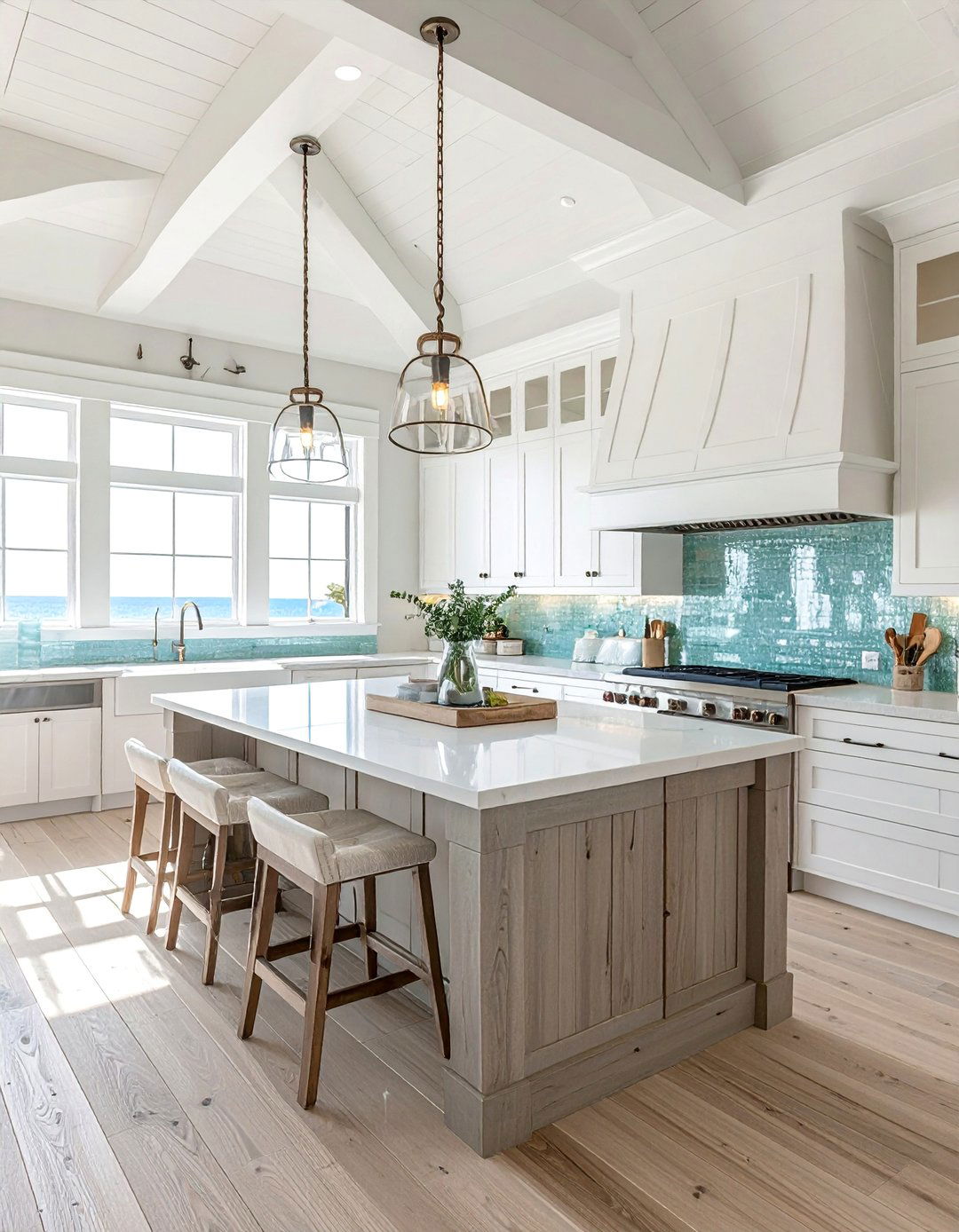
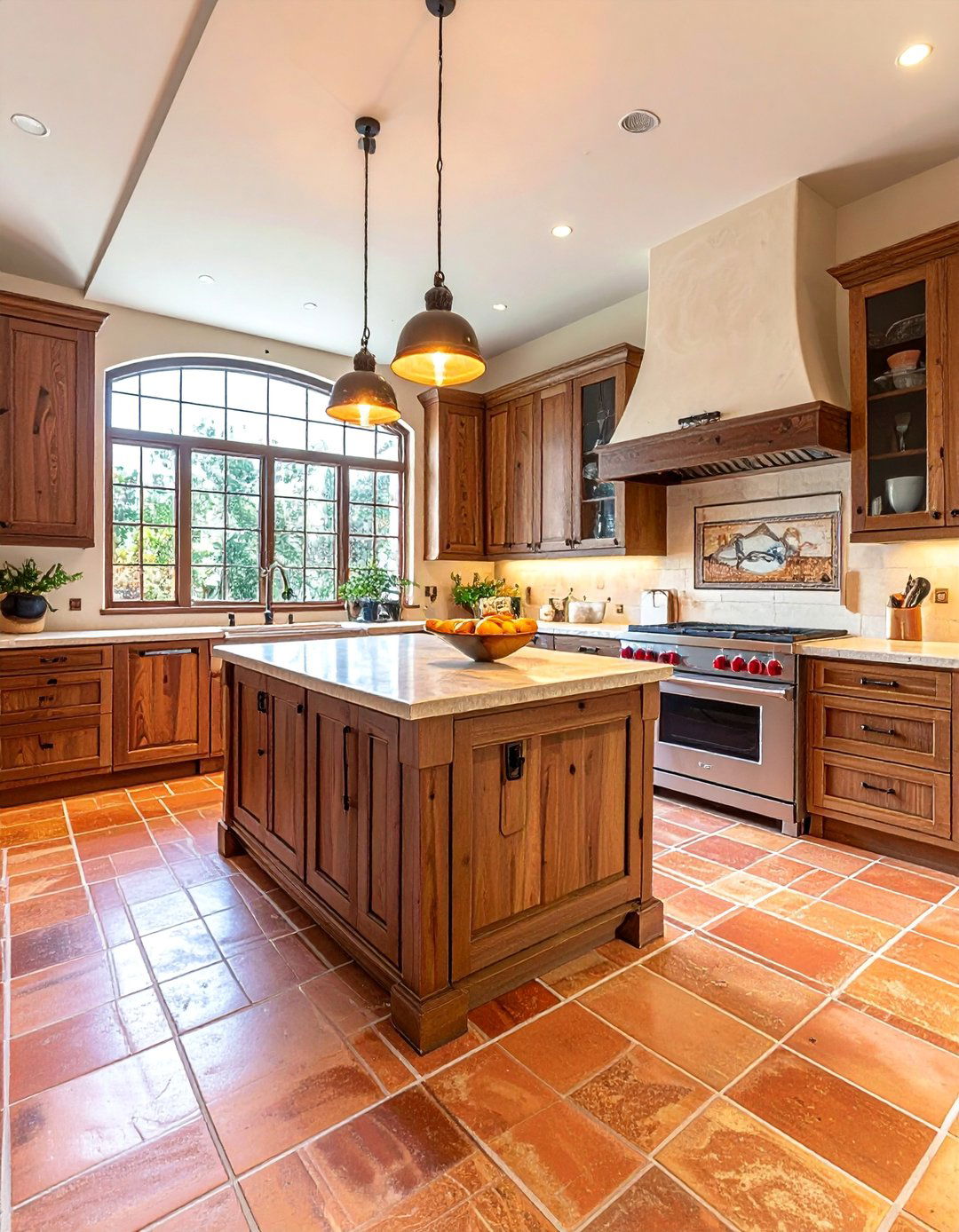
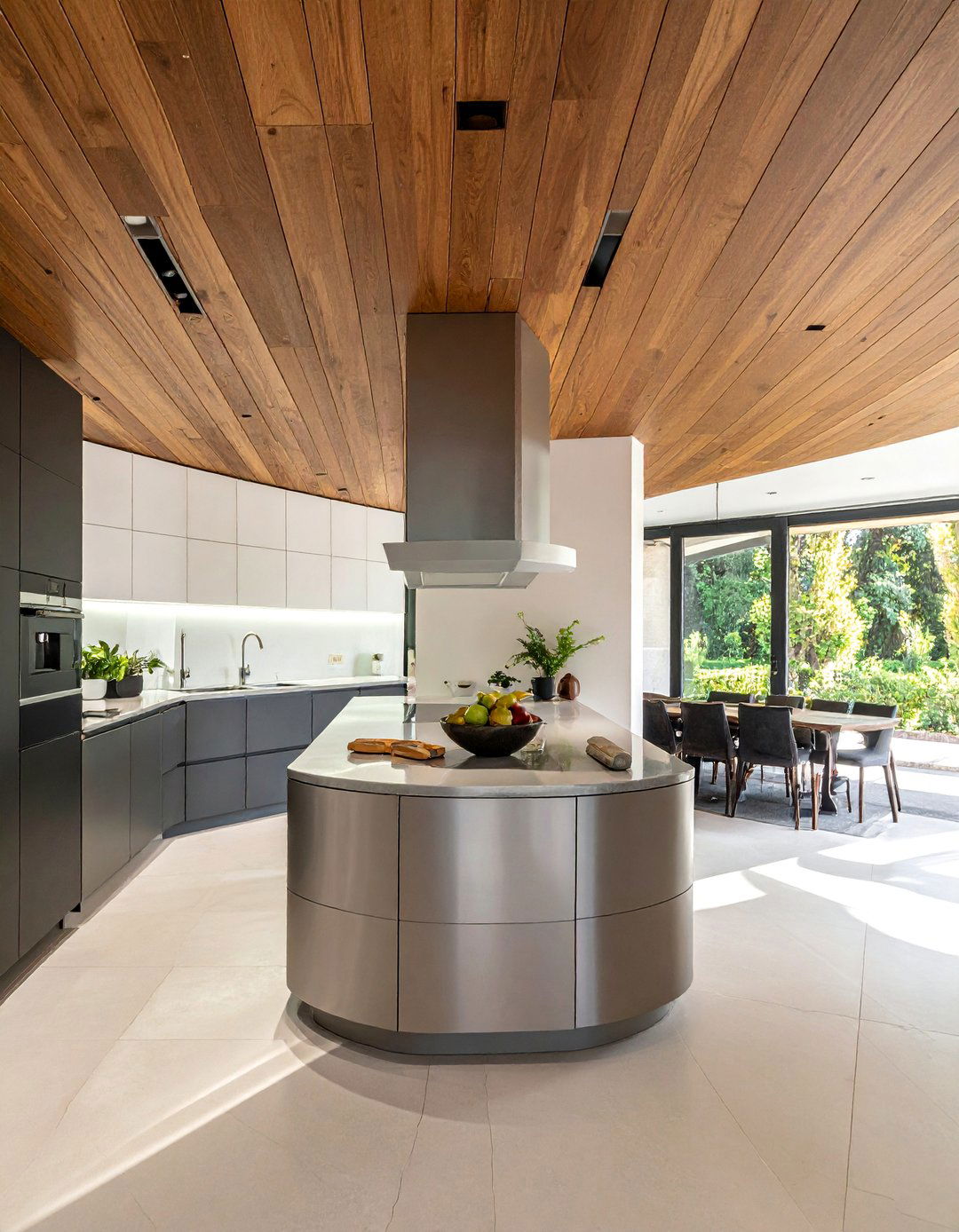
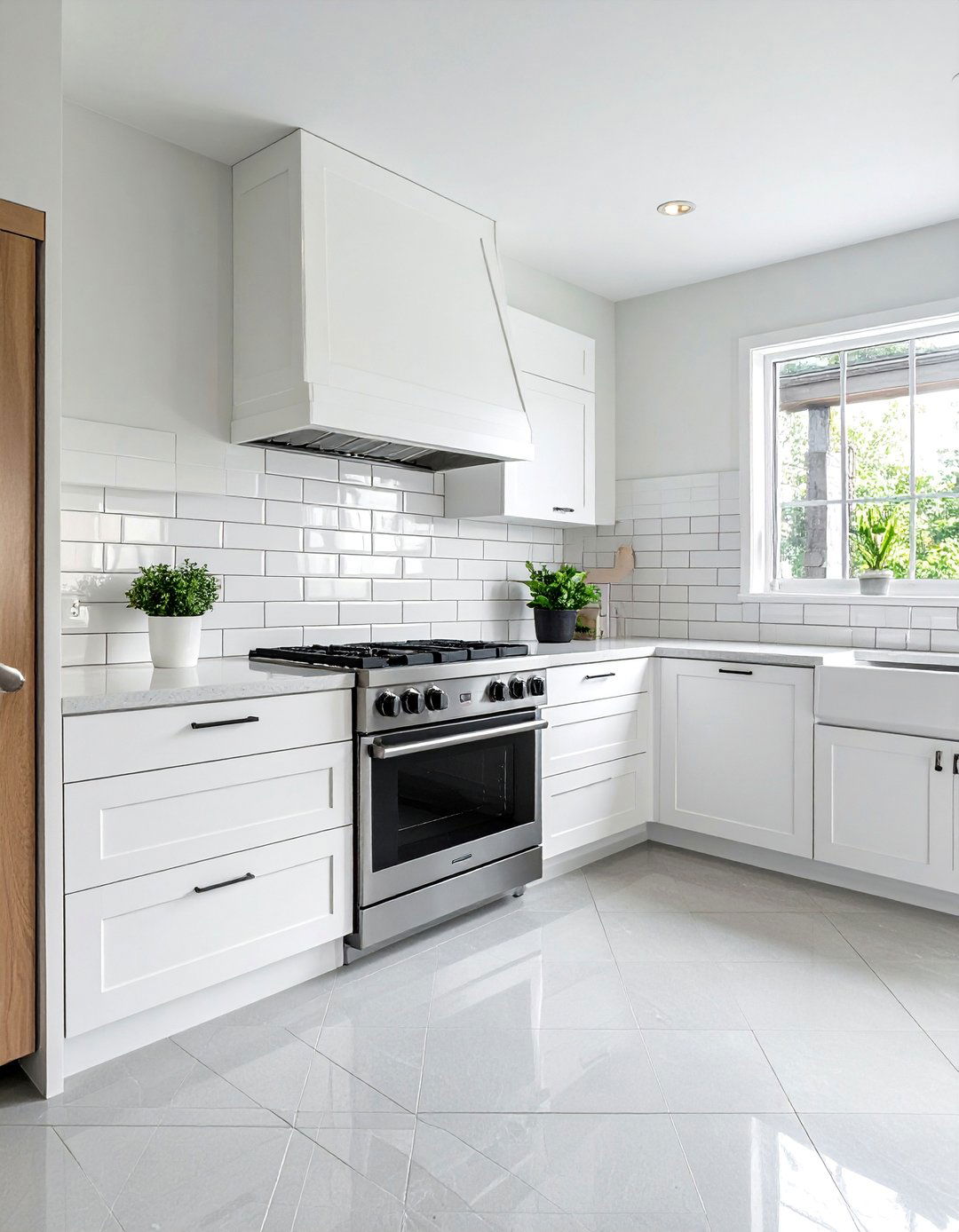
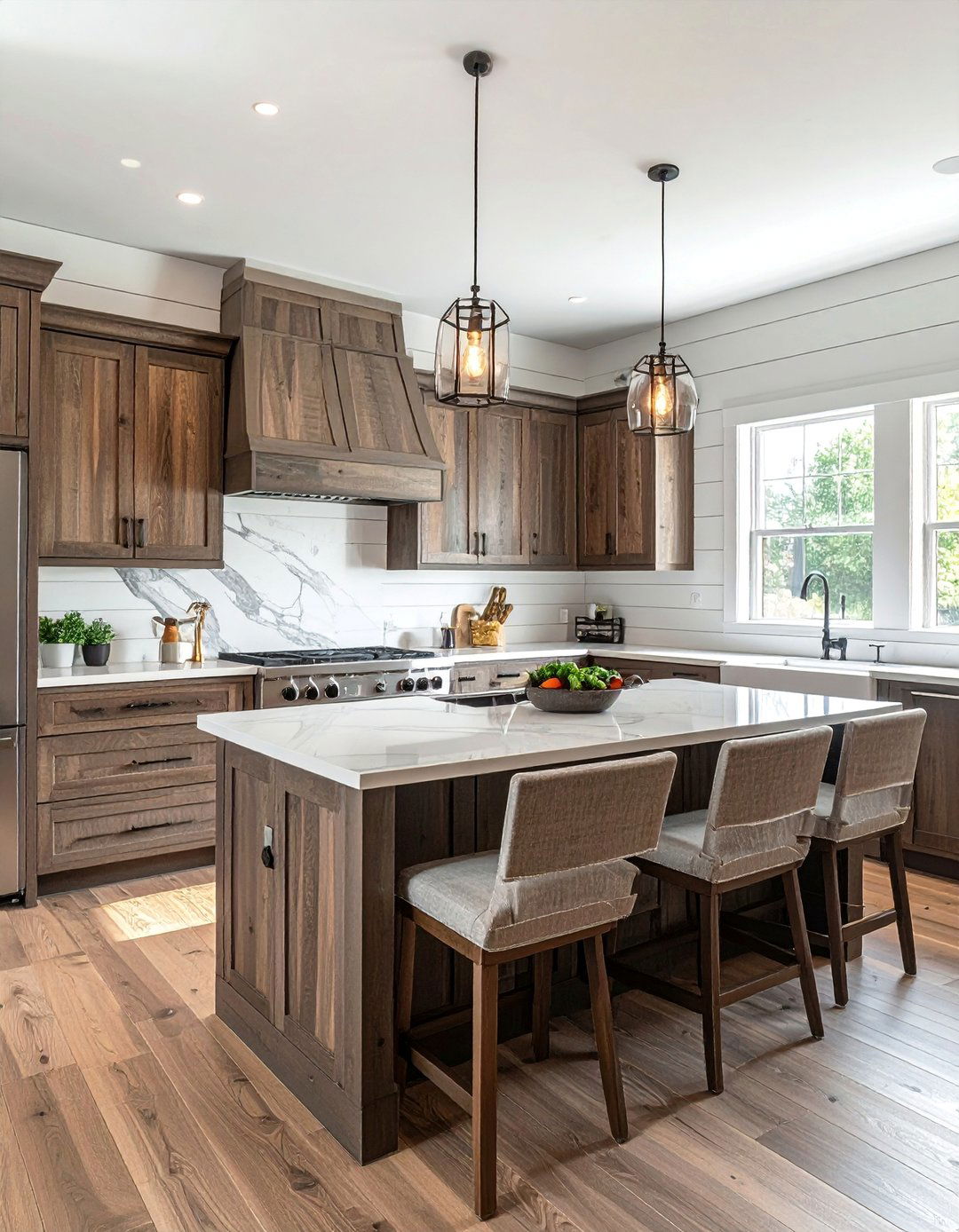
Leave a Reply